Last updated on April 29, 2024
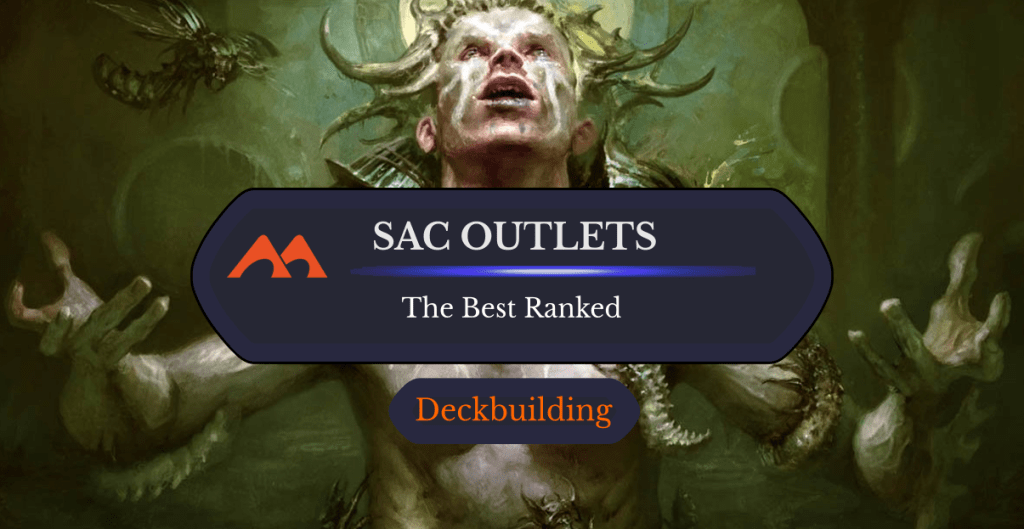
Greater Good | Illustration by Mathias Kollros
If you love sacrificing your creatures for the Greater Good, you’re in the right place. It might seem counterintuitive but there are lots of ways to gain advantages from culling your own horde. Colloquially known as “aristocrat” decks, sacrifice decks look to combine expendable creatures with powerful sacrifice outlets for an in-game payoff.
There’s no shortage of ways to sacrifice your creatures, and getting the mechanic right is almost an art. Which sac outlets should you be considering, either on their own or in a themed deck? And which cards rise above their competition?
Let's dive in and find out!
What Are Sacrifice Outlets in MTG?

Blood Artist | Illustration by Johannes Voss
A sacrifice outlet is any card, cost, or ability that allows you to sacrifice a permanent that you control for some sort of advantage (usually). They always contain the word “sacrifice” in their rules text, which just means to move a permanent you control to its owner’s graveyard.
Some things to consider when looking at sac outlets:
- How often can you use it? More is, well, more, so repeatable sac abilities are better.
- When can you use it? Abilities that can be activated as instants are better than those with sorcery-only activations.
- Are there other costs? Some sacrifice abilities cost mana to activate, while others don’t.
- What’s the perk? The compensation from the sacrifice ability should at least be worth its total cost.
Best Black Sac Outlets
#29. Skyclave Shadowcat
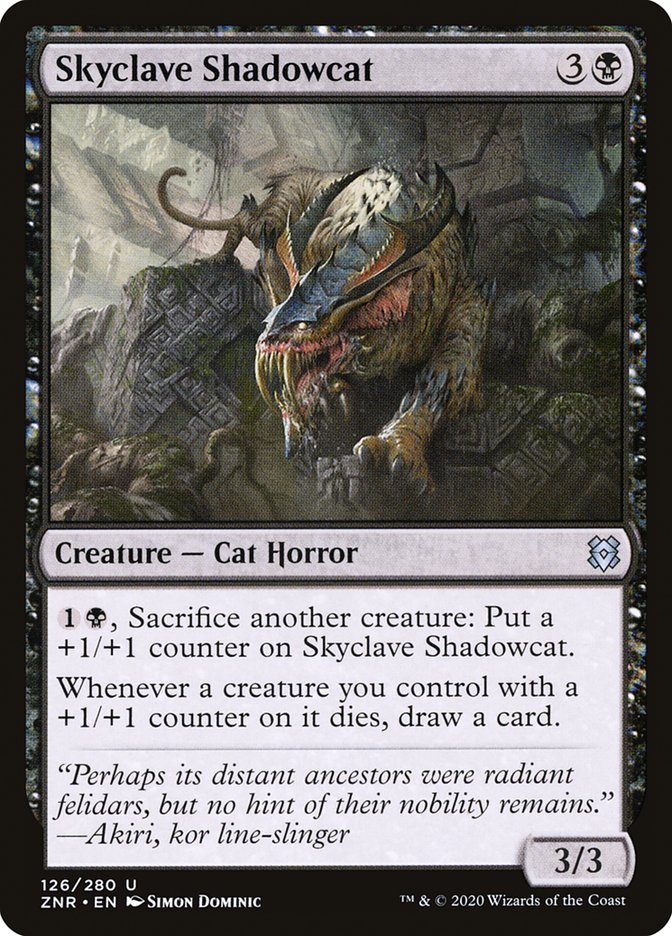
Skyclave Shadowcat is a niche sac outlet for decks looking to dump +1/+1 counters on their creatures. It might be worth considering if your deck is spearheaded by Mazirek, Kraul Death Priest, Reyhan, Last of the Abzan, or any other counter-loving commander.
#28. Cultist of the Absolute
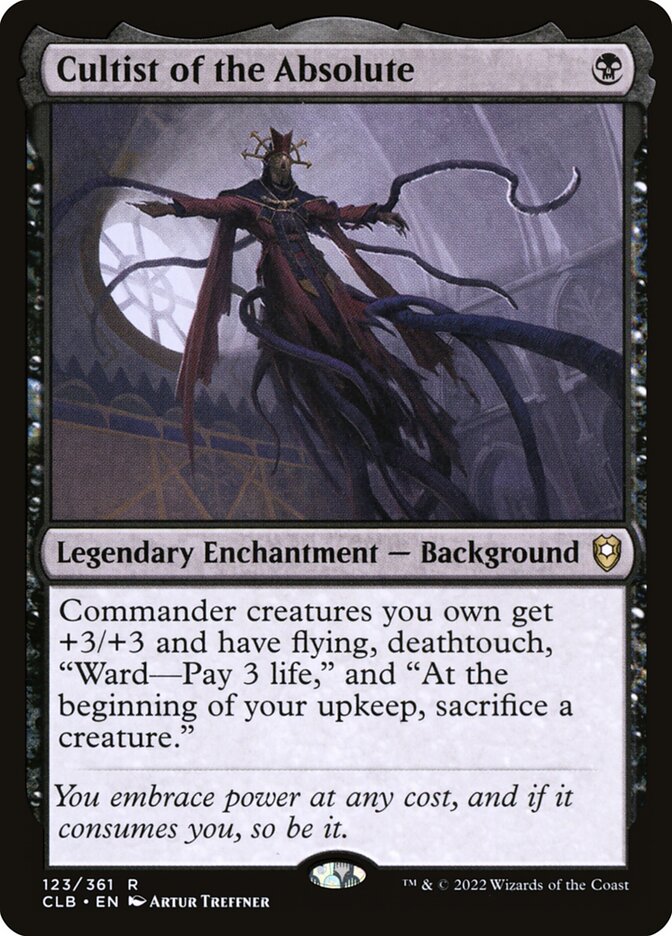
Cultist of the Absolute is a risky background best paired with an aggressive legend. It offers a repeatable way to sacrifice bodies while also turning your commander into an absolute monster.
The sacrifice ability isn’t optional so it’s possible you be stuck with this enchantment on board and be soft-locked out of casting your commander.
#27. Keskit, the Flesh Sculptor
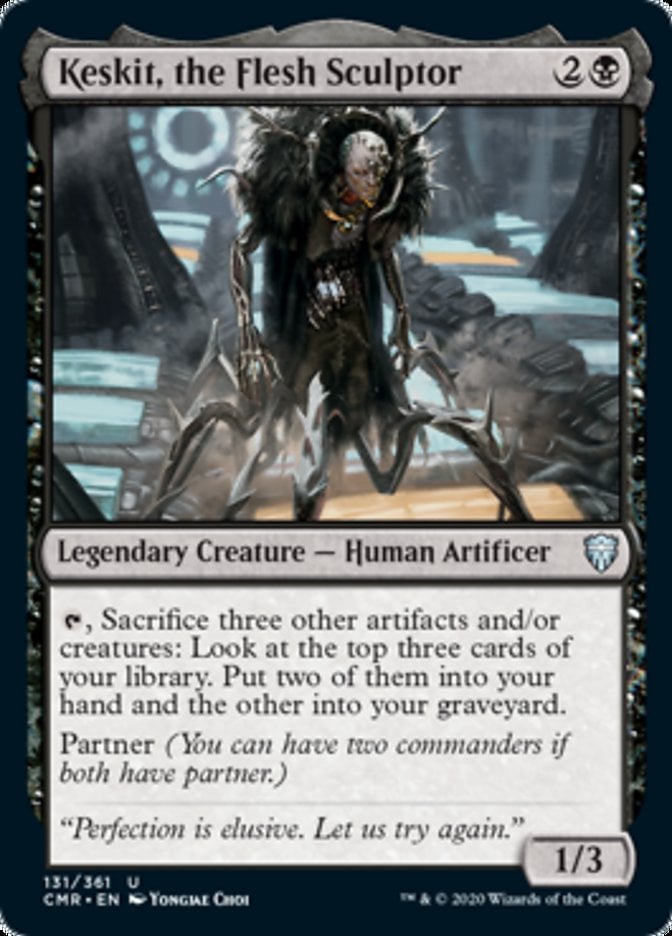
Keskit, the Flesh Sculptor does wonders for artifact-based sacrifice decks, but it also lets you mix and match what you’re trading in for extra cards. Sacrificing three permanents is a tall ask but the reward is worth it. There are also plenty of partners to feed its activated ability.
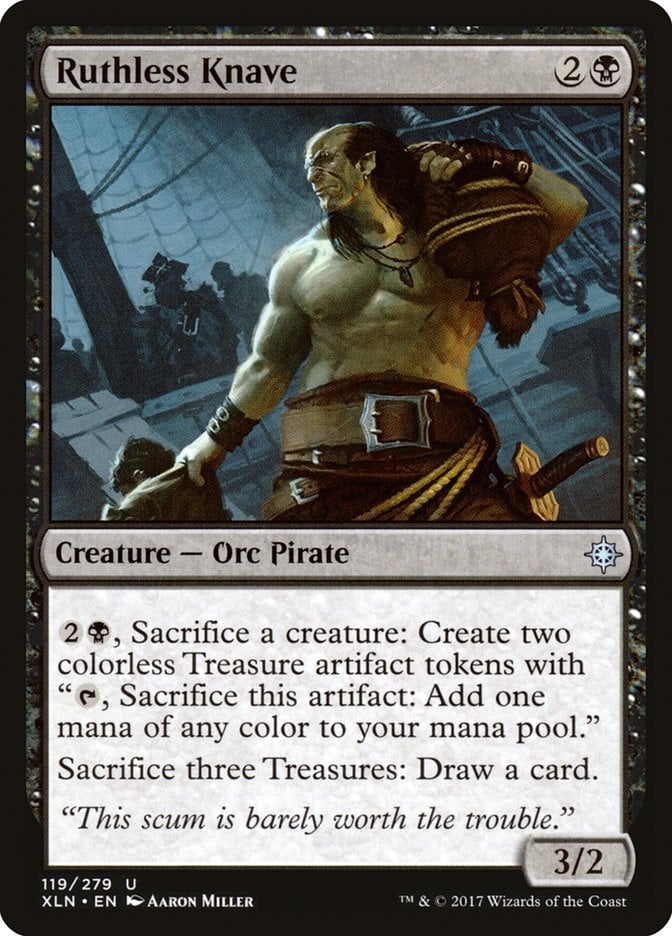
Ruthless Knave is a bare-bones sac outlet: pay three mana, sacrifice a creature, get two Treasure tokens. You can also sacrifice three Treasures to draw a card, but the numbers don’t exactly line up.
It’s not a 1-for-1 exchange, but there are so many other ways to generate Treasure tokens that you may not even need to sacrifice creatures.
#25. Skullport Merchant + Dockside Chef
I’m lumping Skullport Merchant and Dockside Chef together due to their similar abilities. The Merchant comes with its own Treasure token, but the Chef is lower on the curve and doubles as an enchantment.
There are various reasons you might want one or the other, but they both have a repeatable 2-mana activation that converts artifacts or creatures into new cards.
#24. Smothering Abomination
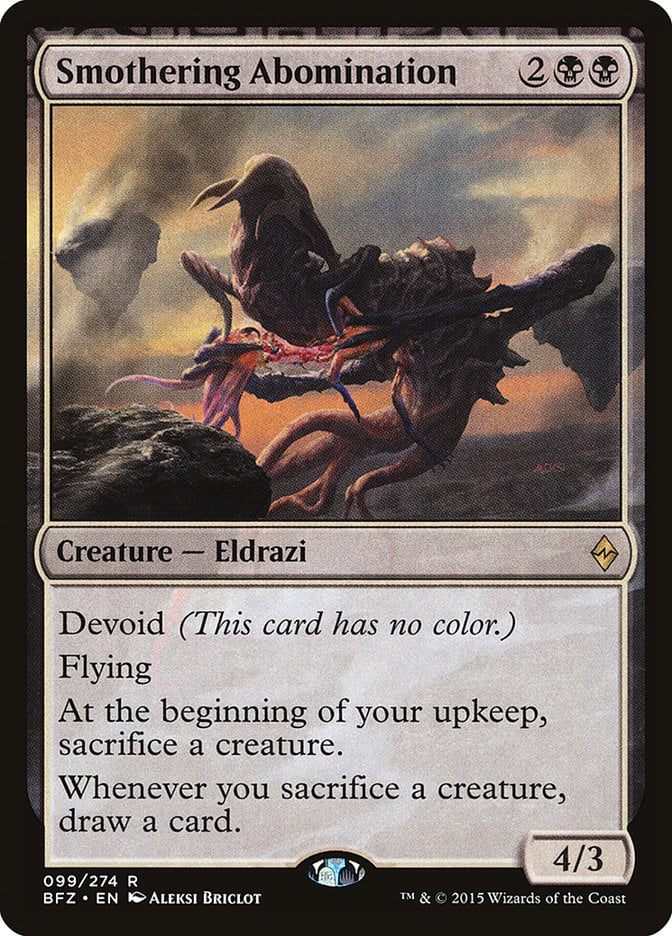
Smothering Abomination is a tricky card to use because it sacrifices itself on upkeep if you have no other fodder. It’s a hefty beater and turns all your sac fodder into card draw free of charge.
#23. Ghoulcaller Gisa

Power creep may have pushed Ghoulcaller Gisa out of favor these days, but its ability to turn a single creature into an army of zombies still packs a punch. Gisa falls squarely in the “powerful but slow” category, so at about the right power level for casual mid-powered Commander decks.
#22. Rankle, Master of Pranks
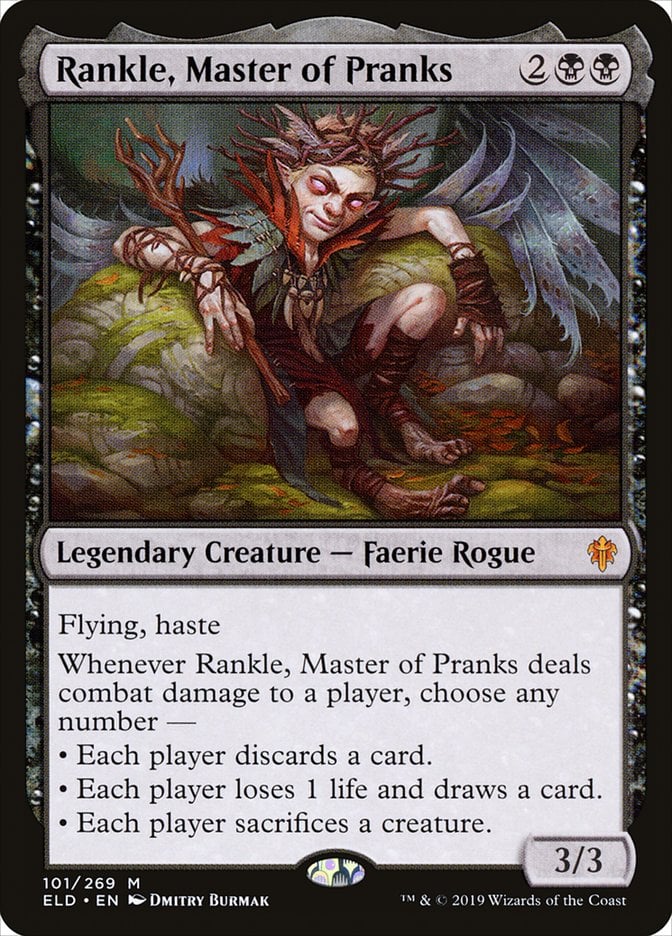
Rankle, Master of Pranks is a bit of a Swiss Army knife including its repeatable sac outlet tool. The ability is tied to Rankle dealing combat damage, but flying and haste certainly help. You get a bunch of other options on top of the sacrifice mode when it connects.
#21. Whisper, Blood Liturgist
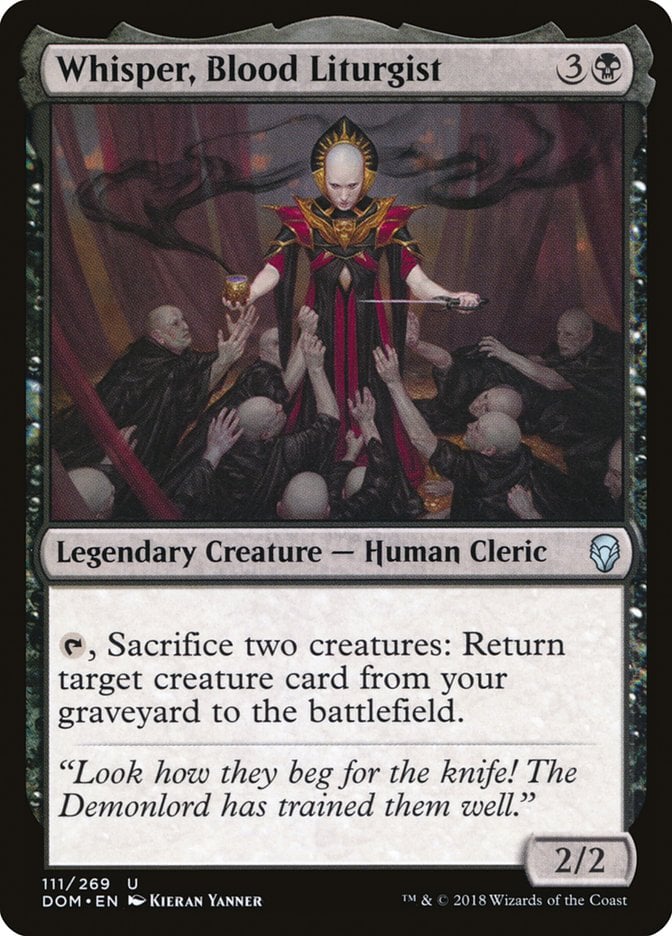
Whisper has a powerful tap ability tied to a fragile body, but the payoff is sound. Whisper, Blood Liturgist is worth a shot if sacrificing a few tokens to reanimate your best creature sounds like a good deal.
The ability is highly telegraphed, so you may become a target and need graveyard protection depending on how juicy your graveyard gets.
#20. Kalitas, Traitor of Ghet
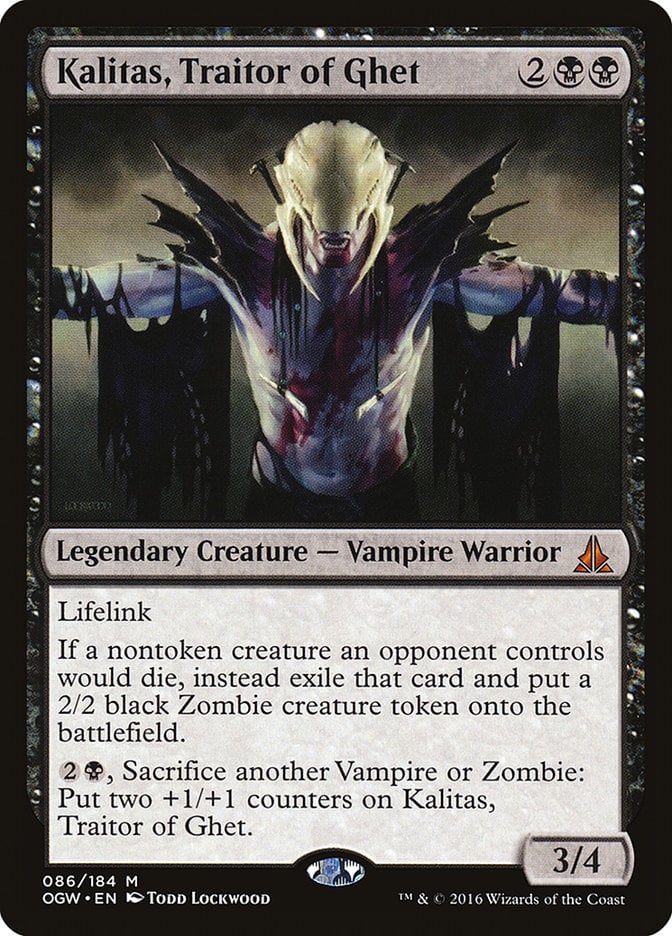
Kalitas, Traitor of Ghet is a formidable creature, but there are restrictions on its activated ability. It’s not quite a zombie or vampire tribal card since it generates its own fodder and you just can’t use it to sacrifice whatever you want.
The passive graveyard hate is the real reason to consider Kalitas, but the sacrifice effect threatens to make it a monster in combat.
#19. Bag of Devouring
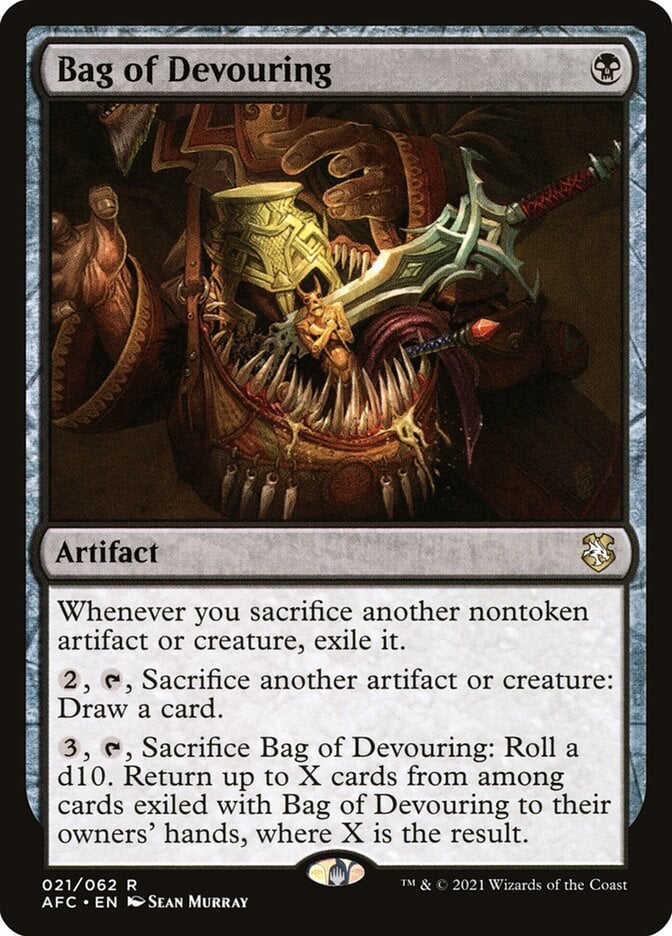
The worst part about Bag of Devouring is having to find your d10 when you finally get around to using it. Until then this serves as another great way to sacrifice creatures for card draw and even refunds you some of your victims on the last activation.
#18. Vampiric Rites
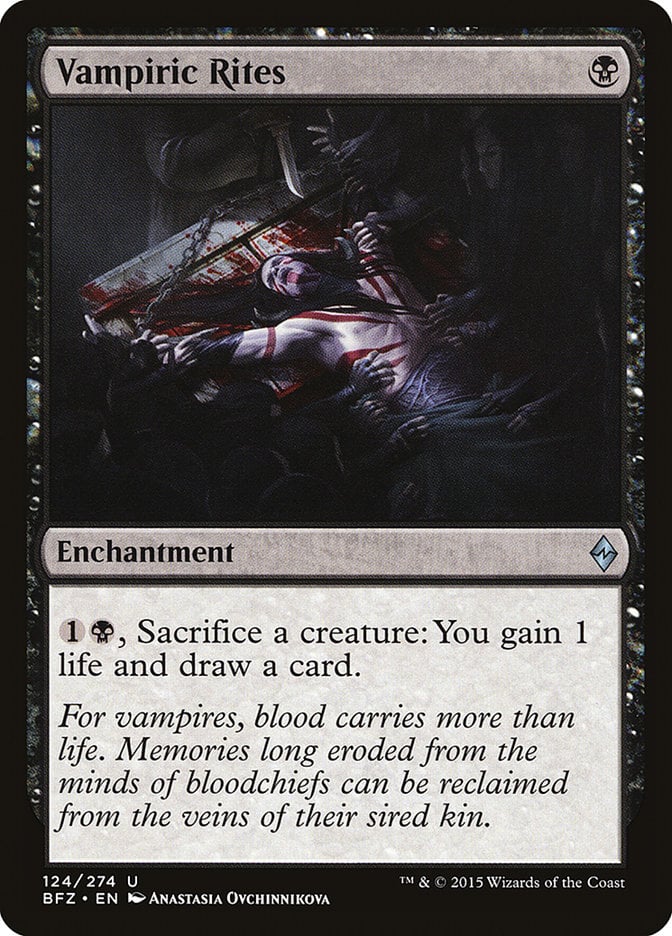
Vampiric Rites is an underappreciated beauty of a sac outlet. It’s similar to Dockside Chef and friends, but on a harder-to-interact-with permanent type. Hopefully the recent reprinting in Double Masters 2022 can give this card some much-needed exposure.
#17. Tevesh Szat, Doom of Fools

Tevesh Szat, Doom of Fools makes tokens, draws plenty of cards, and has a powerful -10 ability. Add partner into the mix and you’ve got a self-contained card advantage machine that’s both threatening and hard to attack.
#16. Shadowheart, Dark Justiciar
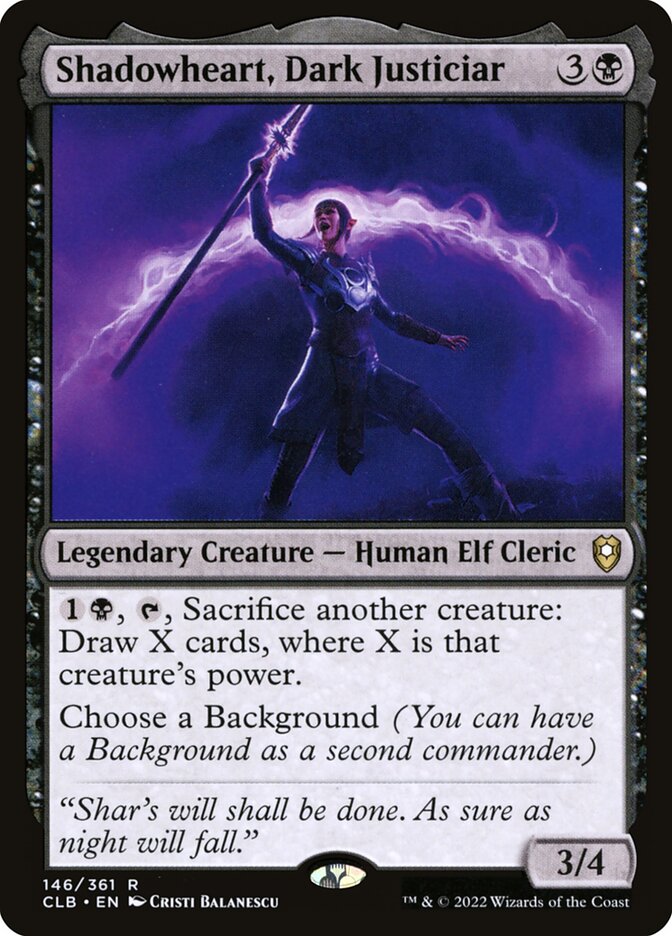
Shadowheart, Dark Justiciar is straightforward in what it wants to do: sacrifice big dumb creatures and draw lots of cards. Pick your favorite background to go with it and you’re off to the races.
#15. Ayara, First of Locthwain

The text “draw a card” never gets old, and Ayara, First of Locthwain is yet another way to sacrifice creatures for cards. It specifically cares only about black creatures, but its persistent lifedrain effect makes it one of the better ways to take advantage of cheap recursive bodies.
#14. Priest of Forgotten Gods

Having to sacrifice two creatures to activate Priest of Forgotten God’s ability looks like a huge deterrent, but you’ll be happy with the results. Your opponents are down on life and creatures while you go up on cards and mana.
It’s the same set-up as with Whisper, Blood Liturgist, but this comes down at a point in the game where it’s much easier to get the ball rolling.
#13. Bontu the Glorified
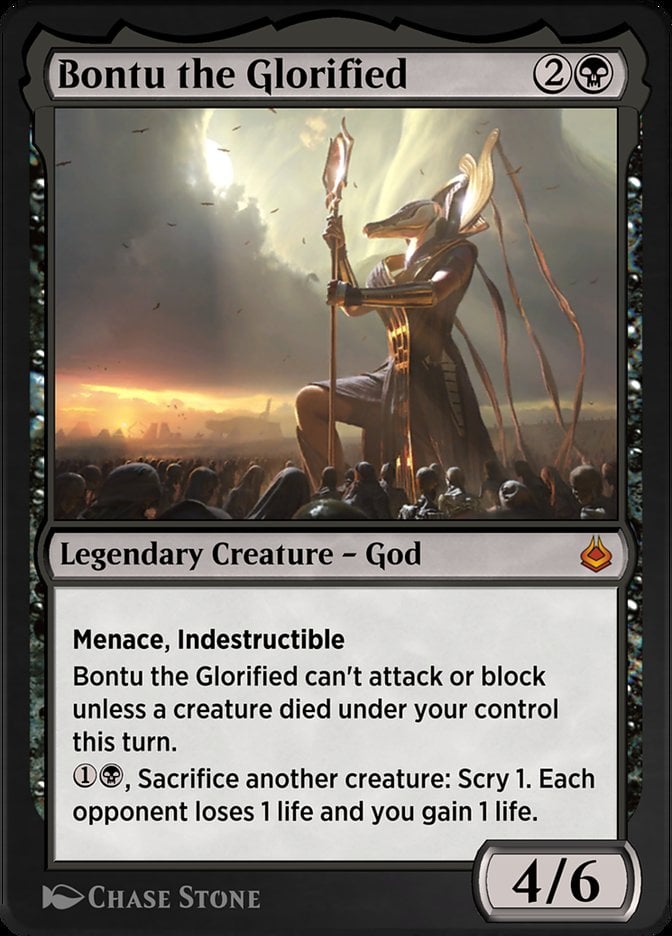
What Bontu the Glorified lacks in card advantage it makes up in resilience. Your payoff here is a giant indestructible menacing beatstick with a valuable activated ability for three mana.
Bontu also plays defense quite well where the threat of activation makes your opponent think twice about attacking.
#12. Phyrexian Plaguelord
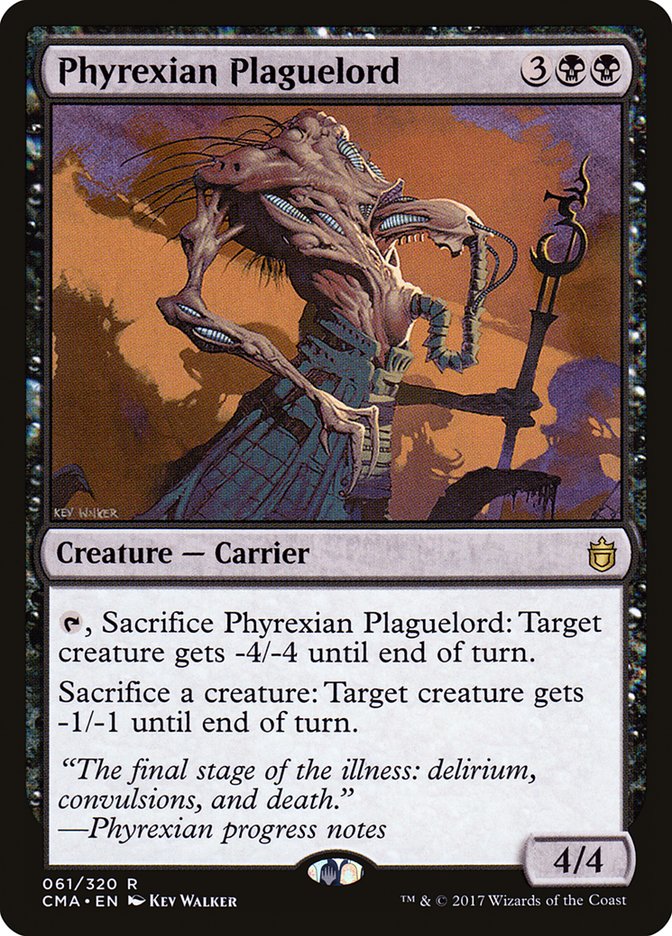
Phyrexian Plaguelord has dropped off in popularity these days due to the existence of newer and more powerful options. It still does a great job at board control, sacrificing itself in a pinch to take down a bigger threat.
Plaguelord is a victim of power creep, but it’s a good budget consideration.
#11. Attrition
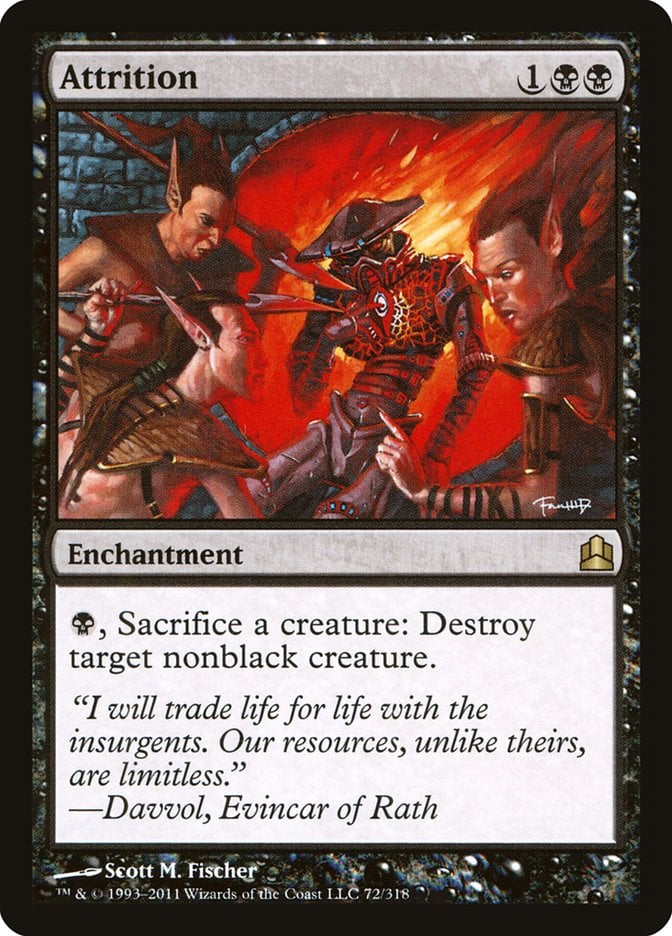
Attrition is a very match-up dependent enchantment: it’s laughably bad against mono-black or creatureless control decks but is virtually unbeatable against non-black creature decks. This can be a silver bullet tech option against some opponents just as much as it can be dead weight.
#10. Erebos, Bleak-Hearted
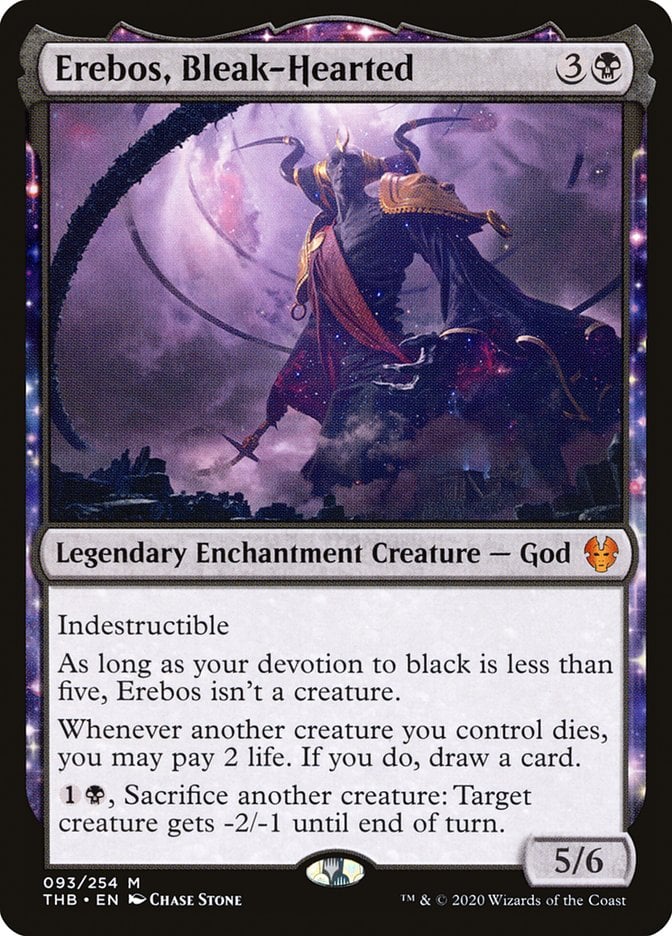
Erebos, Bleak-Hearted fits the much-desired formula of enabler plus payoff in one card. It can sacrifice creatures to dish out -2/-1 debuffs, but it also lets you pay life when a creature dies to draw extra cards.
Having indestructible and being a noncreature most of the time makes Erebos difficult to deal with.
#9. Carrion Feeder
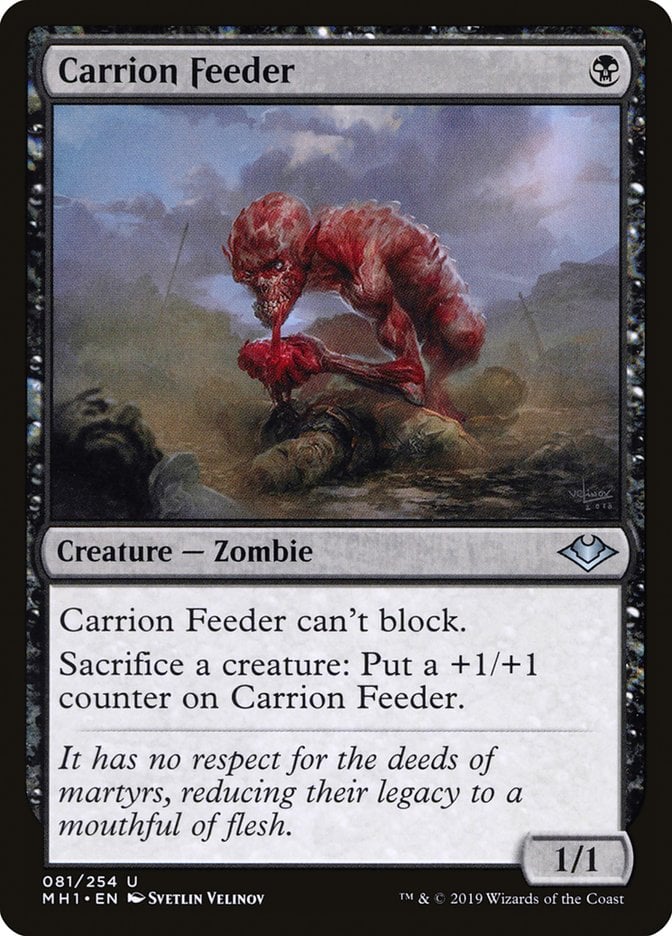
Carrion Feeder is another card in the “cheap sac outlet with minor upside” file, but it can’t block. Even so, cards like this are cheap to cast and quickly help to get your value engines up and running.
#8. Viscera Seer

Having a way to sacrifice your creatures is often beneficial, even if the upside is minor. New players might scoff at the idea of throwing away creatures just to scry, but Commander aficionados will recognize Viscera Seer for its utility as a cheap and free-to-use instant-speed sac outlet.
#7. Woe Strider

This is an excellent enabler. It’s a free sac outlet that comes with its own built-in buddy and helps you scry towards what you need. The ability to recur Woe Strider over and over with escape makes this an above-average pick.
#6. Yahenni, Undying Partisan
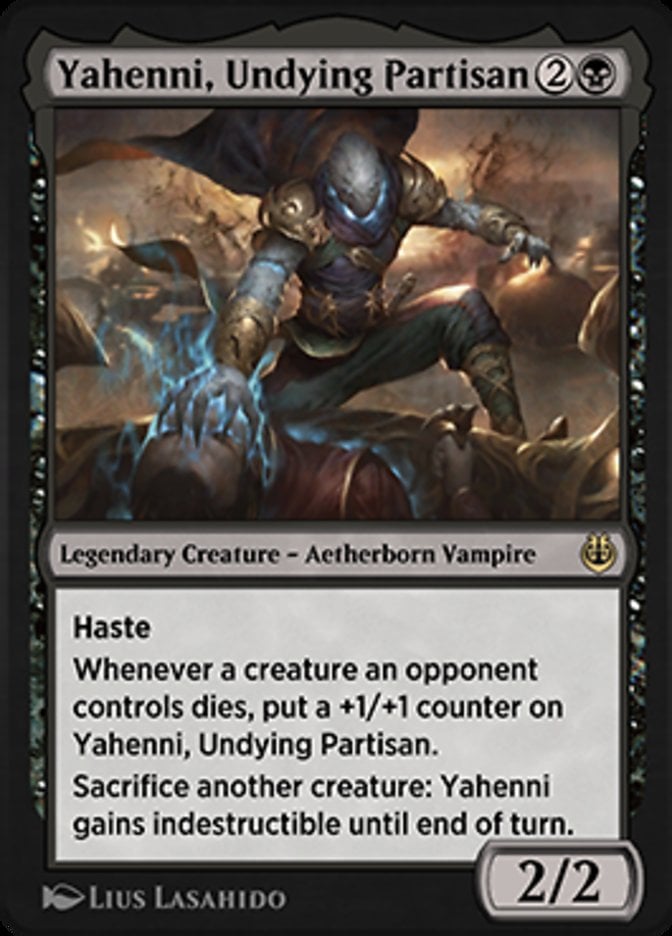
Most decks interested in Woe Strider also want a copy of Yahenni, Undying Partisan. They both fill similar roles, but Yahenni is more resilient thanks to its ability to pick up indestructible.
It sometimes grows large enough to be an actual threat to your opponents.
#5. Razaketh, the Foulblooded
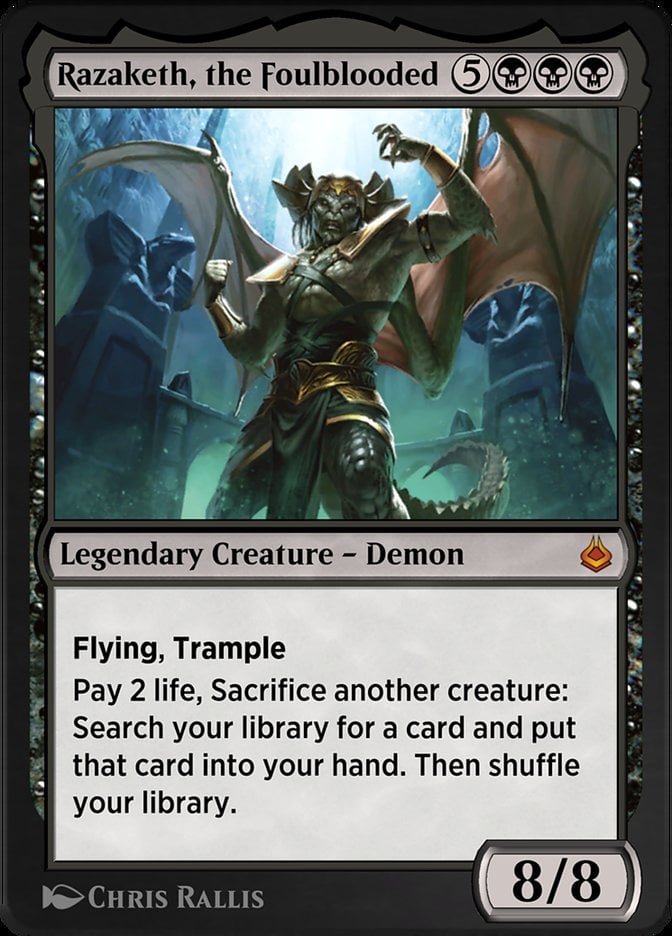
It’s a hefty cost to pay eight mana for Razaketh, the Foulblooded, but few players cast it the fair way. You’ll be cheating it in from the graveyard more often than not and it gives you as many Demonic Tutors as your life total and creature base can support.
#4. Phyrexian Tower
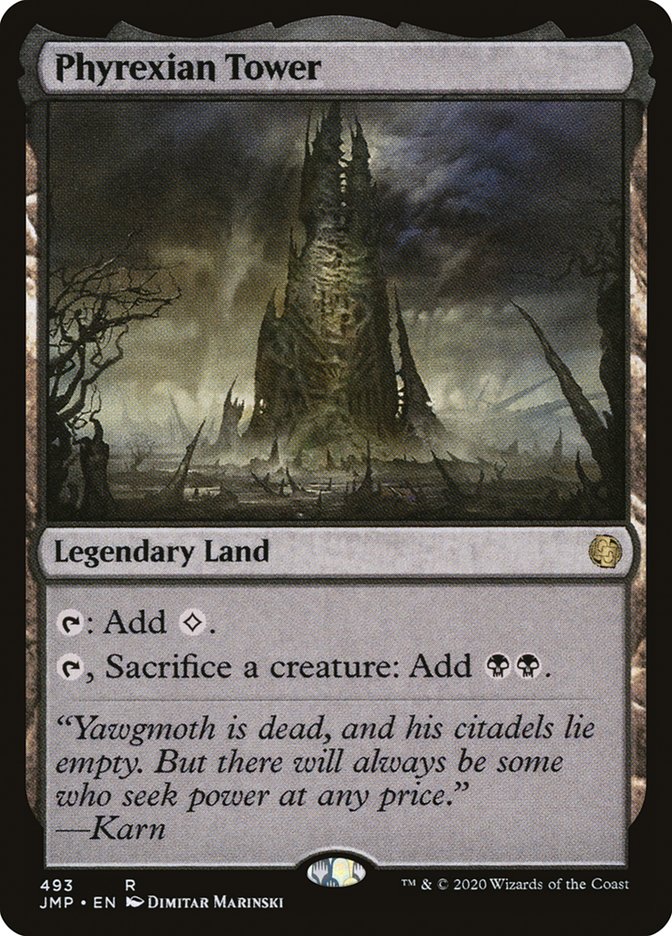
Phyrexians sure love their sacrifices, but who can blame them when all their cards are this good? Phyrexian Tower hides your sac outlet on a land that’s much less likely to be interacted with.
The ramp effect is obviously powerful but it’s really to have this effect tied to a permanent that’s unlikely to be tampered with.
#3. Krav, the Unredeemed
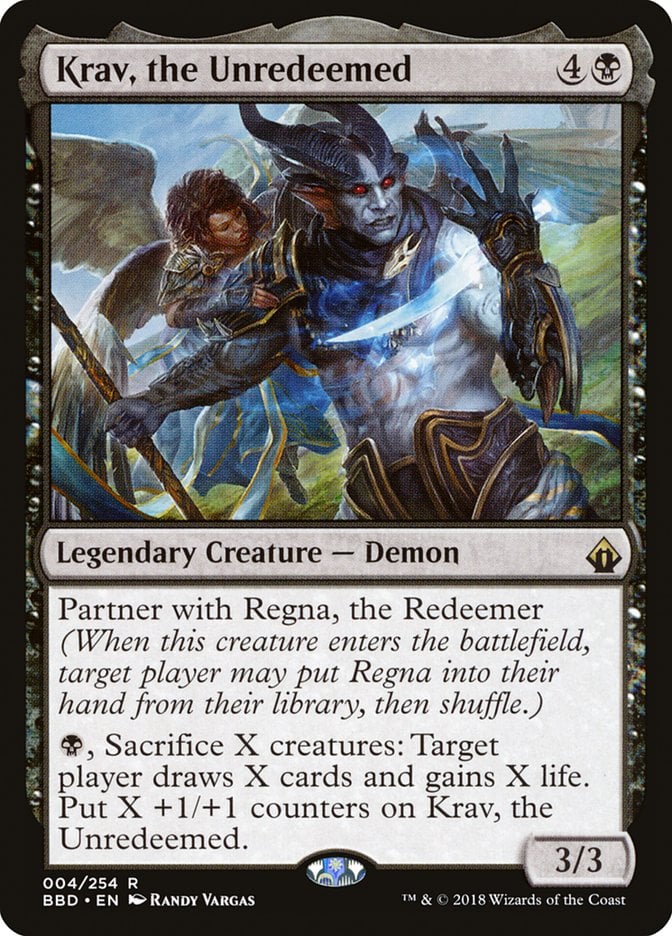
Krav, the Unredeemed is the synthesis of different previously mentioned payoffs: it gets counters, gains life, and draws cards all at once. You can also sac as many creatures as you wish off a single activation.
Its partner, Regna, the Redeemer, is no slouch either and generates tokens so it pairs fantastically with Krav.
#2. Sadistic Hypnotist

Sadistic Hypnotist might not even be mentioned if this was a list of “most fun sacrifice outlets.” It won’t make you any friends but it will make your opponents play with an empty hand.
It might take a few extra bodies to get there, but Sadistic Hypnotist can leave your opponents hellbent very fast.
#1. Yawgmoth, Thran Physician
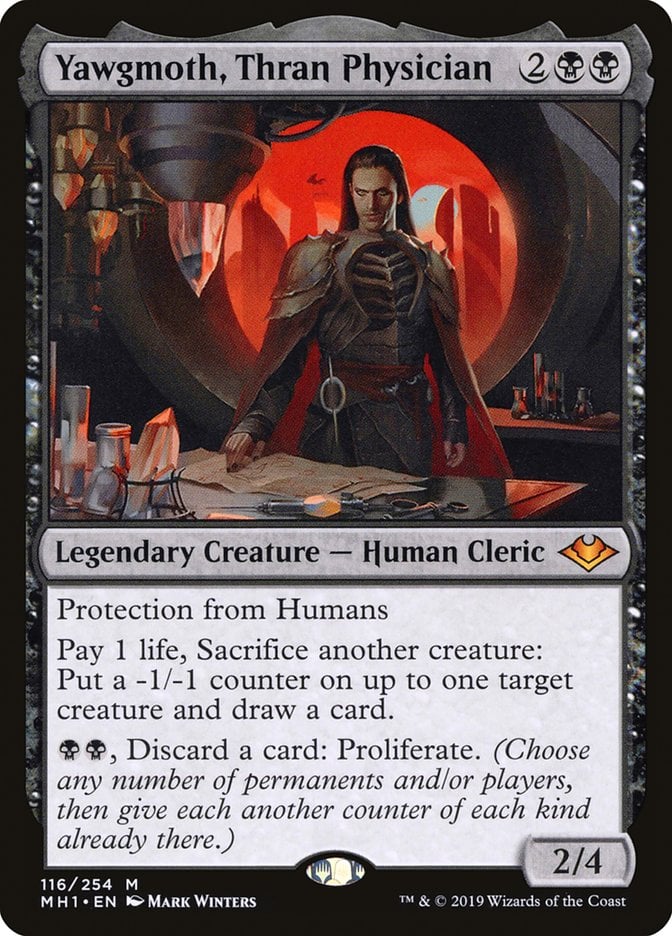
Yawgmoth, Thran Physician has no business being as good as it is. It’s an outstanding sac outlet that lets you cash in creatures for cards while shrinking your opponents’ boards.
It’s also a well-known combo enabler thanks to the existence of undying and the proliferate ability can mow down opposing creatures or accelerate a planeswalker ultimate out of nowhere. And don’t not forget its most annoying ability: protection from humans.
Best Red Sac Outlets
#5. Laurine, the Diversion
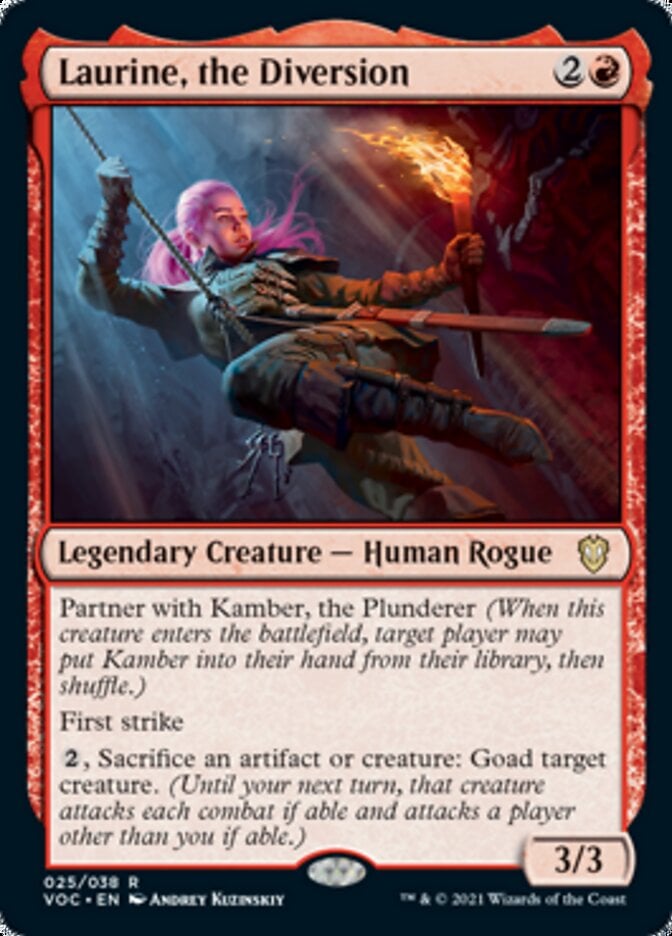
Laurine, the Diversion serves as a middle ground between sacrificing and goading. The formula is pretty simple: sacrifice creatures or artifacts and force your opponents’ creatures to smash into each other.
You don’t necessarily recoup the loss of sacrificing your permanents, but the damage your opponents are doing to one another hopefully makes up for this.
#4. Greater Gargadon
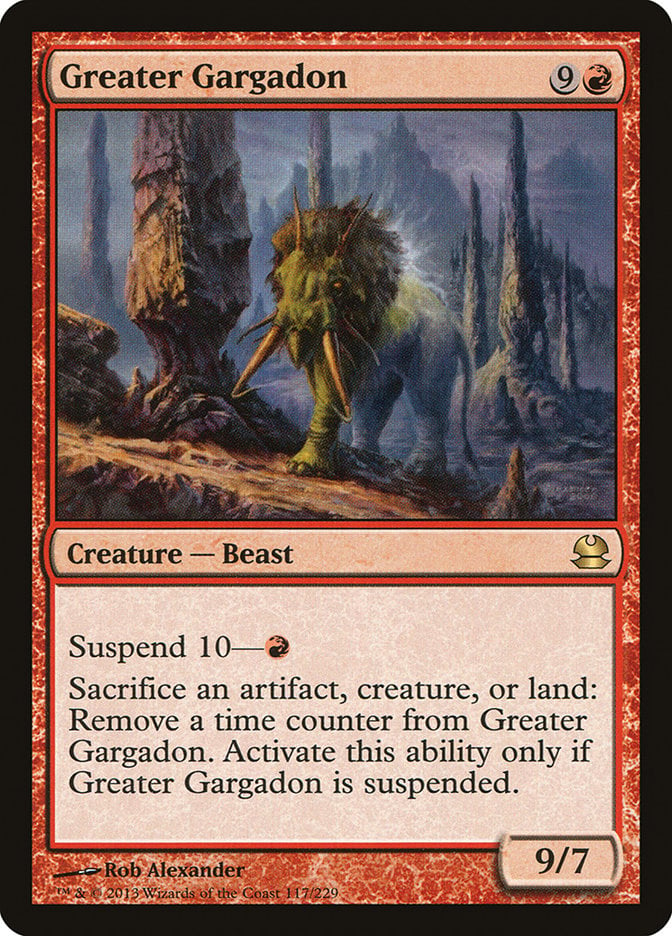
Greater Gargadon has always been more unique than it is blatantly powerful. It’s a sacrifice outlet that you can hide in exile via suspend, letting it dodge removal spells and counterspells.
You’ll run out of activations eventually but you can rest assured that your sac outlet is neigh untouchable until then.
#3. Industrial Advancement

Industrial Advancement is still fairly new. It still has all the workings of a powerful sacrifice tool though. It doesn’t work quite as well with most creature tokens but sometimes lets you sacrifice something small and inconsequential to spike a game-changing creature off the top of your library.
#2. Gut, True Soul Zealot
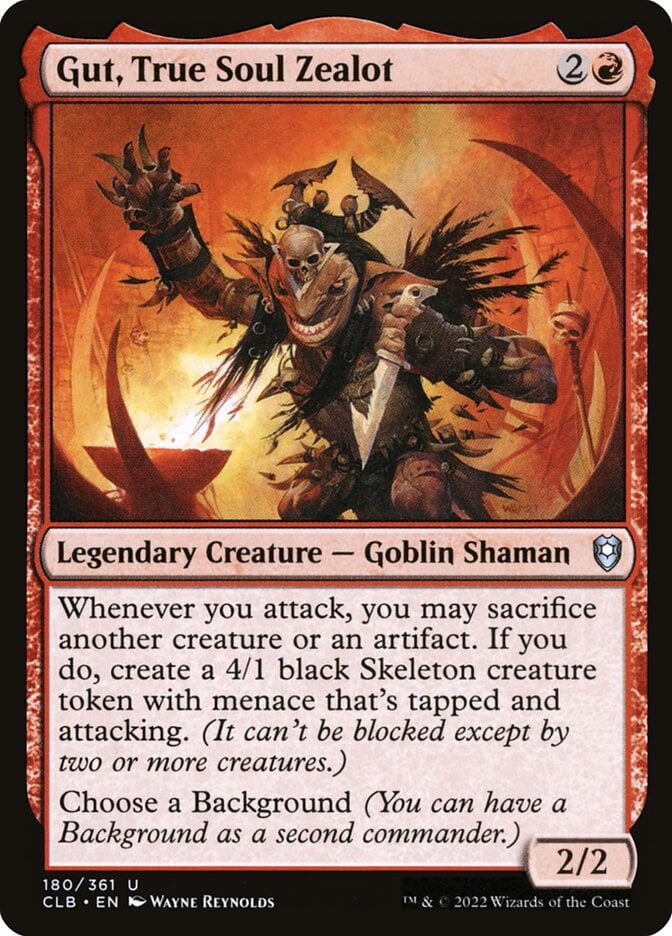
Gut, True Soul Zealot is an aggressively-slanted creature that ties together elements of pure aggro and sacrifice. The Skeleton tokens it creates hit hard, and you get to select a background to complement Gut’s ability. I’ve seen it paired with Cultist of the Absolute to good effect.
#1. Goblin Bombardment
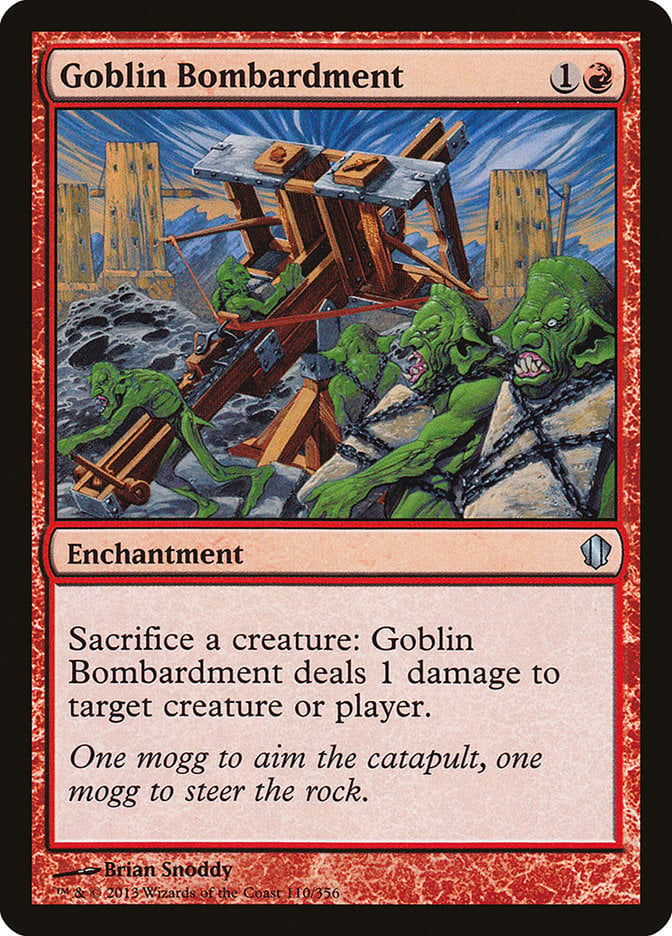
Goblin Bombardment is the premium way to turn sacrifice fodder into damage. This enchantment has been reiterated numerous times (Barrage of Expendables, Makeshift Munitions, Weaponize the Monsters), but none of them compare to this card’s mana-less activation.
Best Green Sac Outlets
#4. Perilous Forays
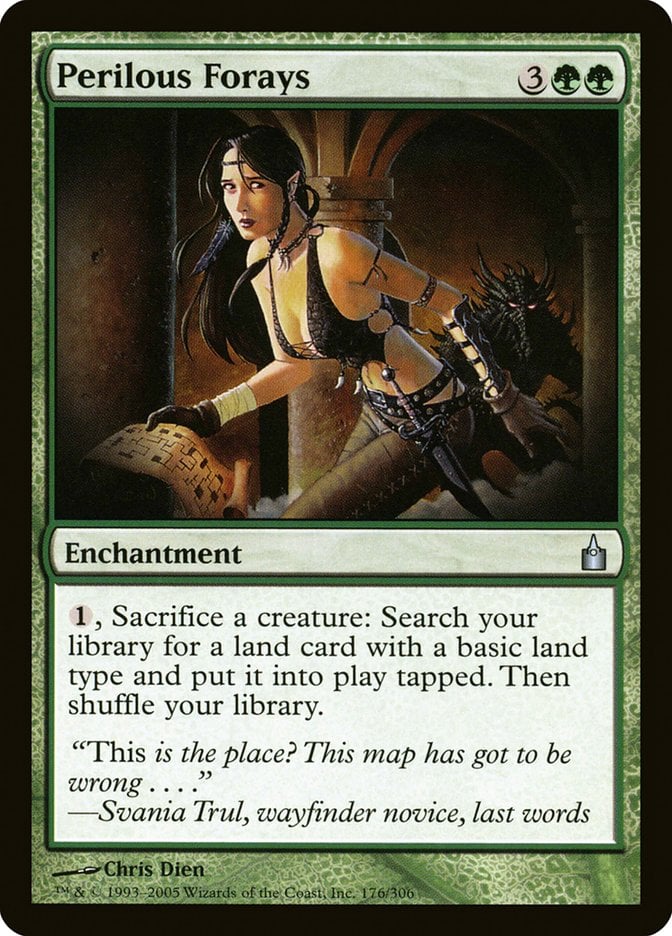
Perilous Forays is unique because it turns your sacrificed pawns into lands rather than card draw. It’s a 5-mana enchantment that asks you to invest more resources so it’s not an auto-include by any means.
Decks with expendable bodies and an appetite for extra lands can make good use of this. Pro tip: try pairing this with Bloodghast.
#3. Birthing Pod

Decks centered on Birthing Pod tend to be combo-oriented, working up a mana value chain to find specific creatures. It works all the same for aristocrat decks and helps with consistency issues.
Sacrifice decks often need three pieces: enablers, fodder, and payoffs. Birthing Pod can help to find your key pieces, albeit in a tricky way.
#2. Evolutionary Leap
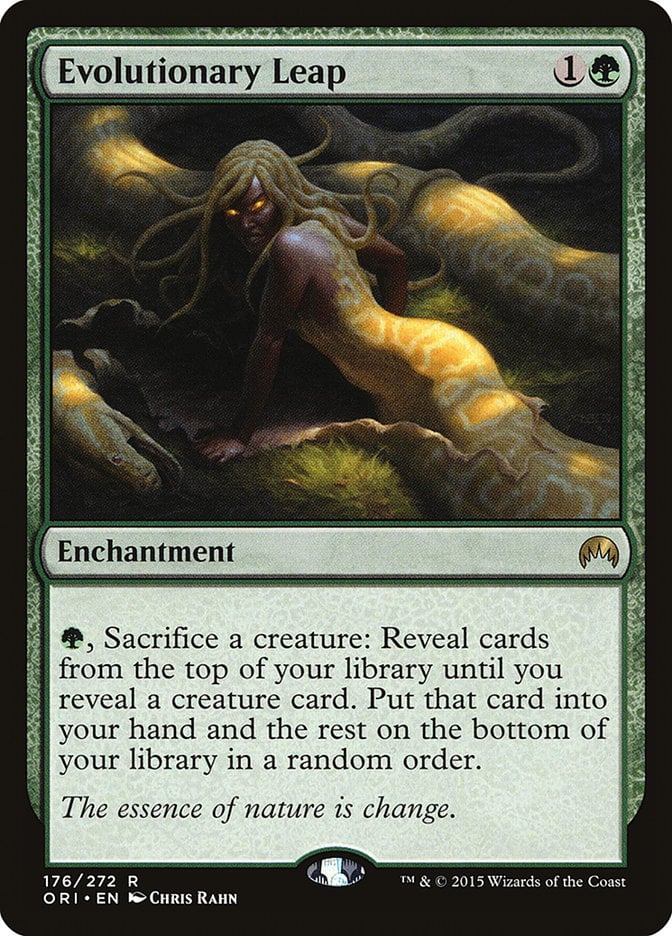
Evolutionary Leap plays best in token strategies where you can trade your on-board tokens towards new threats from your library. It’s a great way to stay ahead of removal-heavy decks by turning anything that gets targeted into a new problem for your opponent.
#1. Greater Good
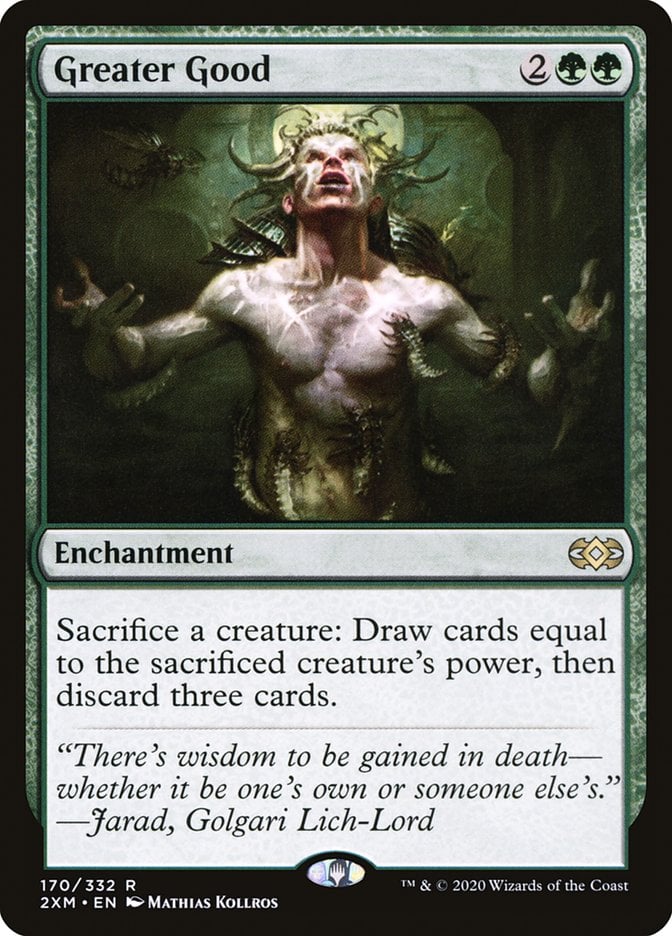
Greater Good is another sac outlet intended for use with larger creatures. You’ll probably sacrifice actual threats instead of expendable tokens, but this can draw obscene amounts of cards for no extra mana investment.
Best Multicolored Sac Outlets
#21. Dina, Soul Steeper
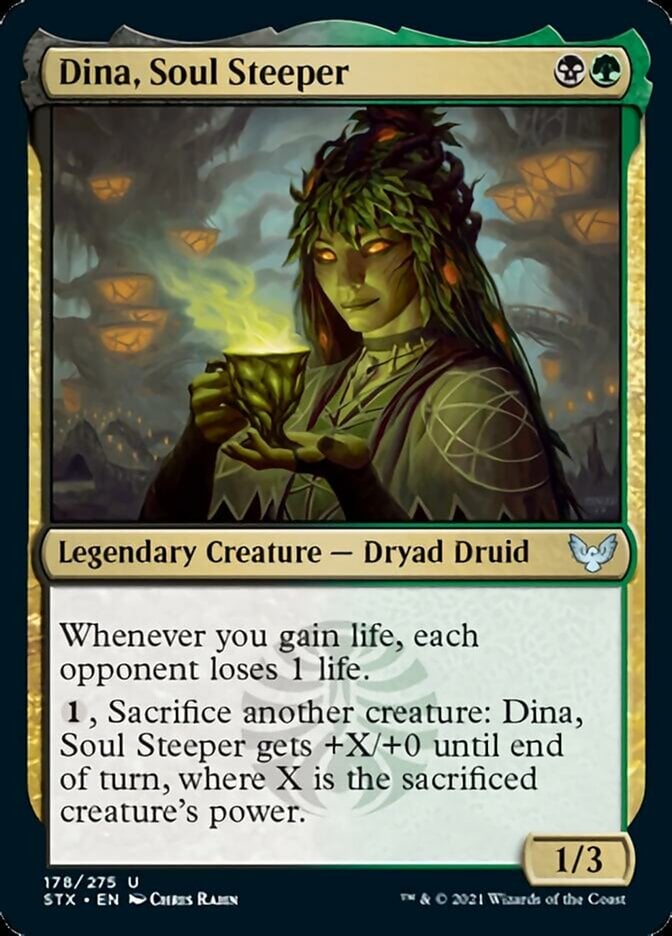
Witherbloom alum Dina, Soul Steeper can threaten huge chunks of damage out of nowhere if left unblocked, but its true calling is in aristocrat-style builds. You can use Dina’s cheap sacrifice ability alongside cards like Zulaport Cutthroat to make your opponents lose two life per death trigger.
#20. Izoni, Thousand-Eyed

The activated ability on Izoni, Thousand-Eyed takes a bit of set up, but it’s quite good and lets you cash in creatures for card draw and life. The card is at its best in self-mill decks that are able to fill up the graveyard quickly.
There should be enough creature cards in your graveyard to summon an army of insects waiting to be sacrificed by the time you can cast Izoni, Thousand-Eyed.
#19. Grist, the Hunger Tide
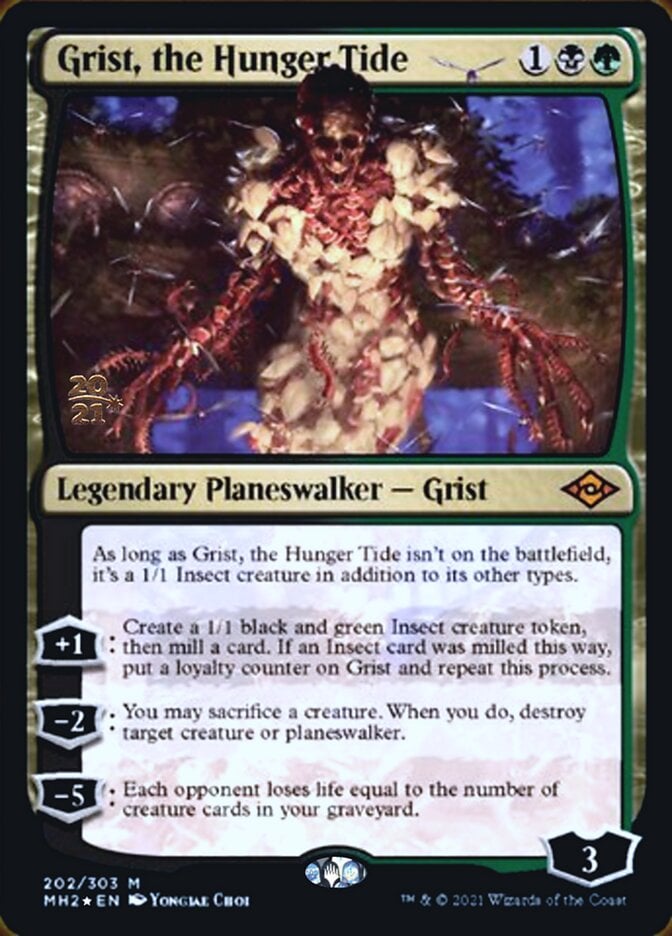
Grist, the Hunger Tide isn’t the same powerhouse planeswalker in EDH that it is in Constructed, but it’s still a sac outlet worth mentioning. Its -2 ability is key and lets you sacrifice a creature to destroy target creature or planeswalker.
You should be able to generate a few extra tokens to refuel that -2 with some time and a few activations of the +1 ability. Rinse and repeat.
#18. Anje, Maid of Dishonor
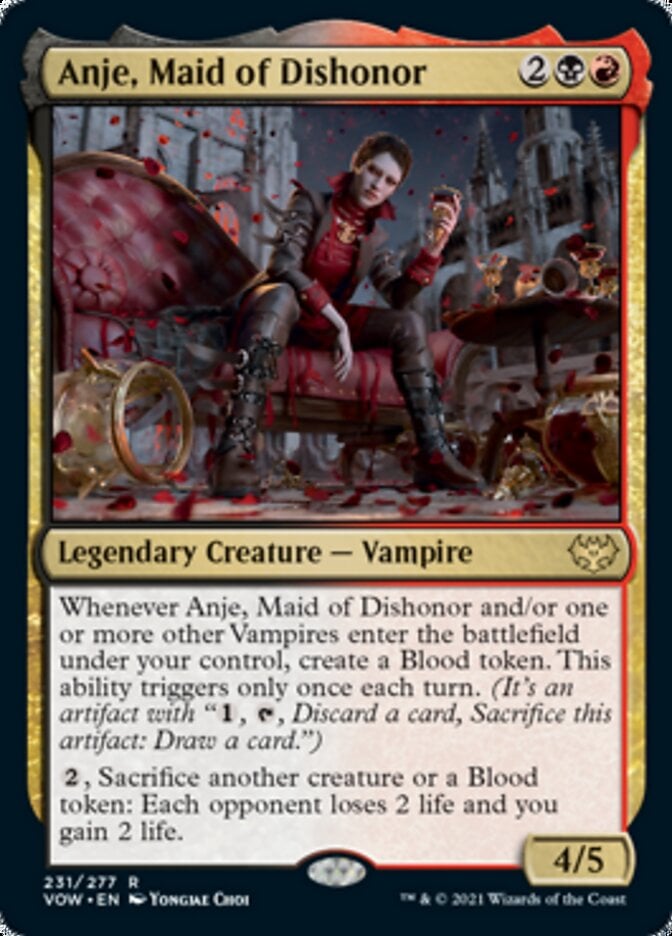
Anje, Maid of Dishonor might read as a vampire tribal payoff at first glance, but it’s got a powerful sacrifice ability and comes with its own Blood token.
A repeatable sacrifice effect for two mana is a lot. Draining each opponent for two life per activation adds up quickly.
#17. Greven, Predator Captain
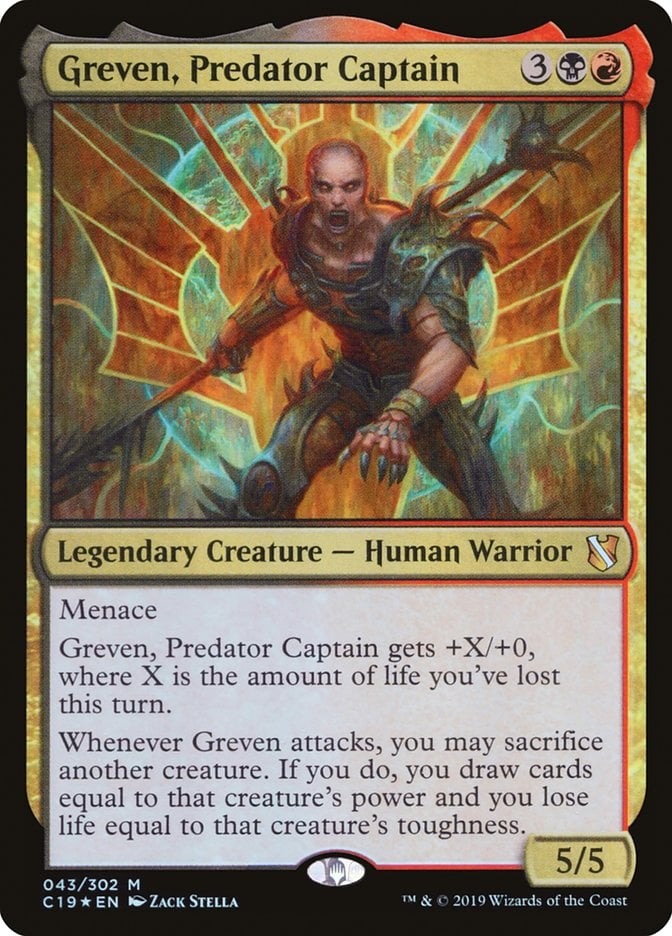
Greven is another sac outlet that requires a specific type of deck to tick. That is, a deck full of high-power and low-toughness beaters. You can’t just stick Greven, Predator Captain in any deck and hope it works, but it can restock your hand in decks looking to sacrifice giant creatures.
#16. Hidetsugu, Devouring Chaos
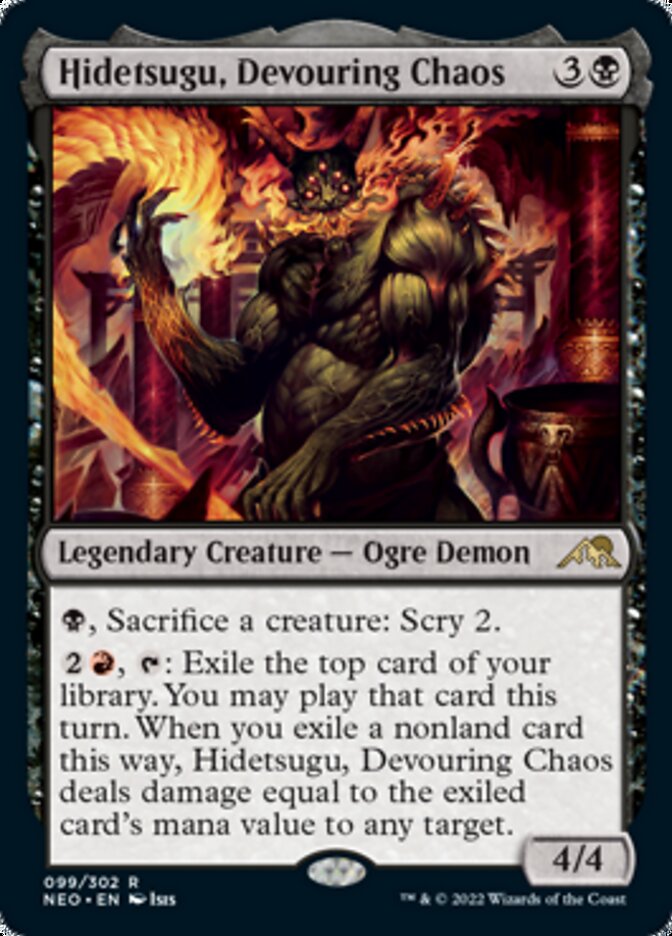
Neon Destiny’s Hidetsugu, Devouring Chaos has a sacrifice effect that’s secondary to a much splashier main ability. Hidetsugu’s red activated ability wants you to reveal expensive cards from the top of your library while the black ability sacrifices creatures to scry into the right cards.
Hidetsugu can be quite powerful, but the sacrifice-to-scry effect should be used in service of the second ability.
#15. Ghave, Guru of Spores
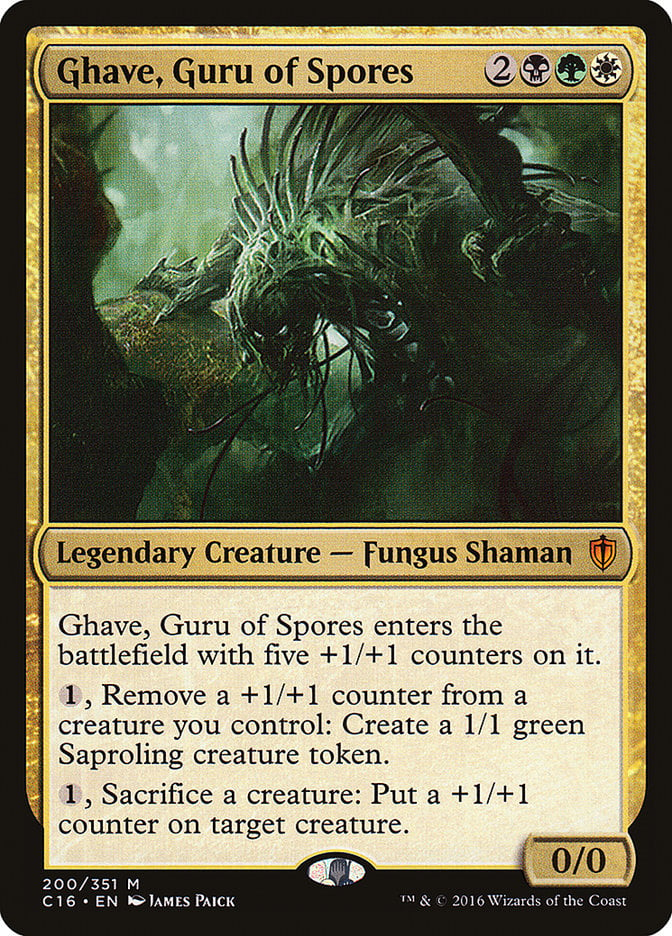
Ghave is a classic commander well-known for infinite loops with token and counter doublers like Parallel Lives or Doubling Season. Ghave, Guru of Spores is also perfectly fine as a sacrifice outlet. It allows you to sacrifice creatures to grow your threats and then lets you use +1/+1 counters to spit out more tokens.
This might seem like a whole lot of nothing on paper, but it’s not hard to profit off the counters-tokens loop with any sort of sacrifice payoffs on board.
#14. Ravenous Squirrel
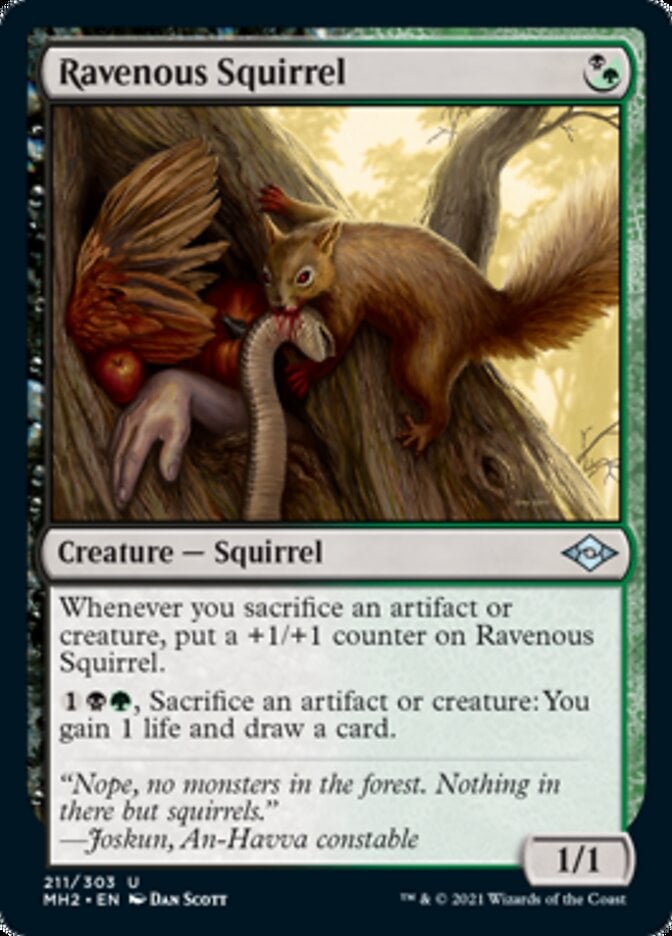
You might want to try this for your Golgari () decks if you’re feeling a little squirrely. The activated ability is a bit pricey, but Ravenous Squirrel is the perfect mix of payoff and enabler on one card.
This grows as you enact your game plan and has welcome bonuses with its incidental lifegain and ability to sacrifice artifacts.
#13. Garruk Relentless / Garruk, the Veil-Cursed
You have to work to transform Garruk Relentless, but Garruk, the Veil-Cursed is a formidable sac outlet. The -1 ability sacrifices creatures to tutor up any creature without restriction and put it in your hand.
The Veil-Cursed also has an annoying +1 to provide the appropriate fodder and a potential game-ending -3. This card is a flexible planeswalker that holds its own and doubles as an intermediate sac outlet with all the front-facing abilities.
#12. Lyzolda, the Blood Witch

Lyzolda, the Blood Witch works best as the frontrunner of its own Commander deck. It lets you throw around damage or draw extra cards in a Rakdos () deck full of expendable or recursive creatures.
The right kind of fodder can do both.
#11. Hidden Stockpile
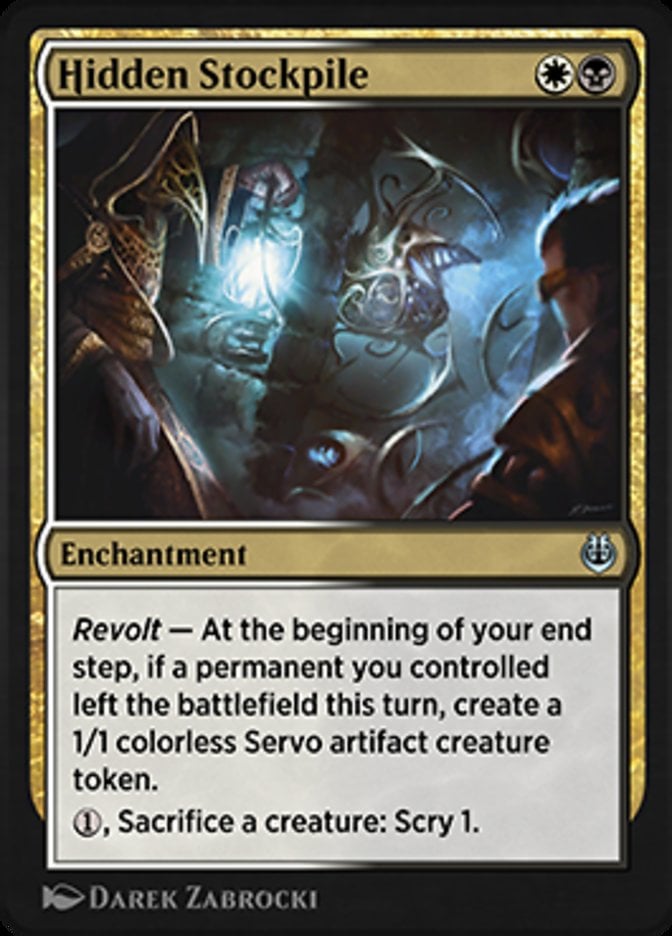
Hidden Stockpile might be one of the most innocuous looking cards on the list because it doesn’t read like a super powerful card. But it falls into the payoff plus enabler camp and gives you a steady stream of loyal Servo tokens just begging to be sacrificed.
#10. Ayli, Eternal Pilgrim
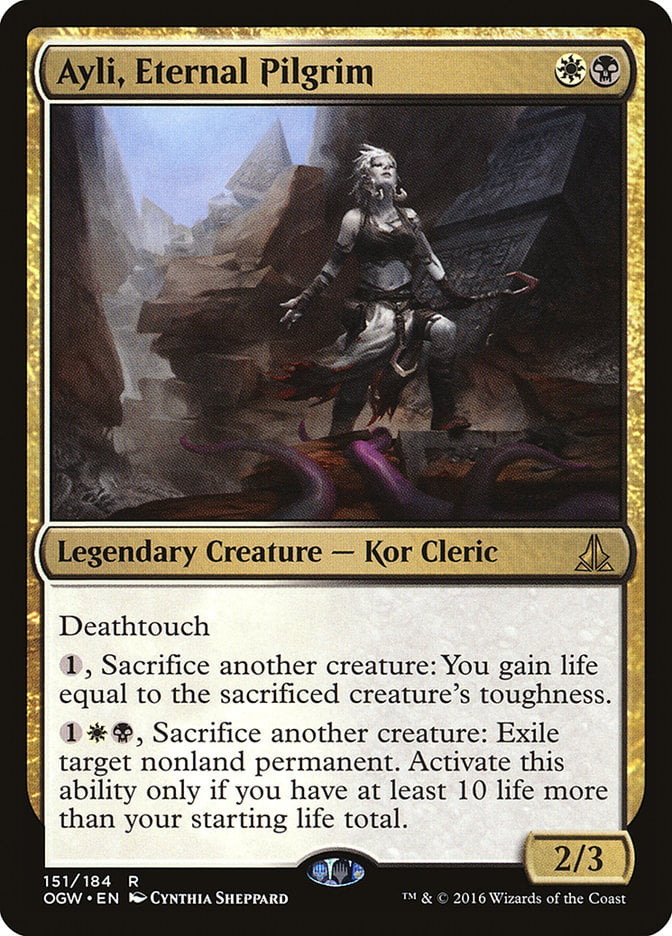
Ayli, Eternal Pilgrim sits at the crossroads between sacrifice and lifegain. Meet the life total requirement on its last ability and it starts converting your creatures into Utter Ends.
This makes for a cheap easily recast-able commander that gives you a reason to care about gaining life in your sacrifice deck.
#9. Kels, Fight Fixer
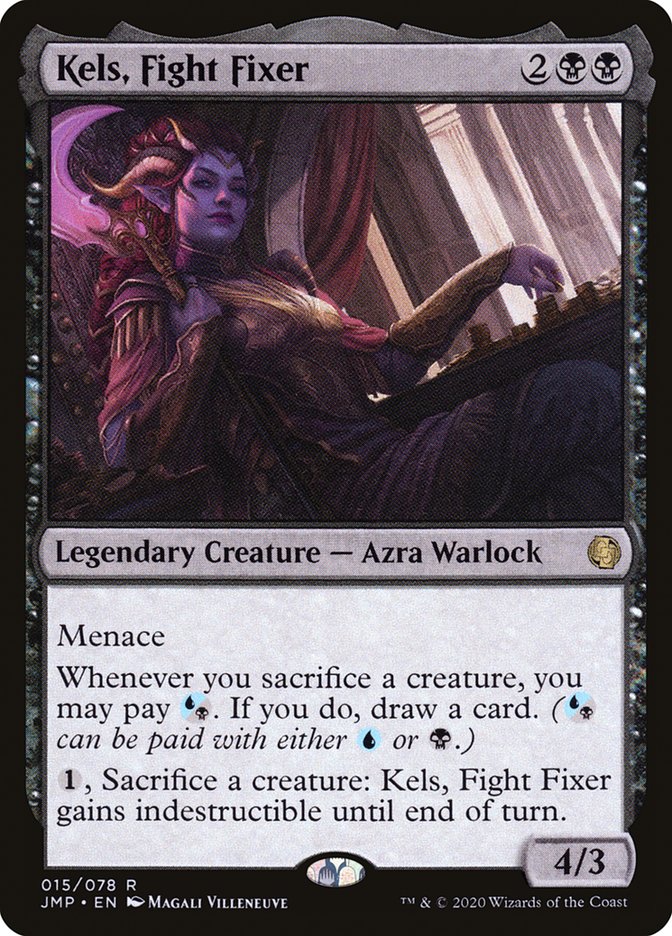
Blue doesn’t get in on the sacrifice action that often, but Kels fixes that problem. Kels, Fight Fixer is about 99% black. Its only blue comes from the hybrid mana symbol in its rules text.
But it’s blue enough, so this might be the commander for you if you’re looking to play an aristocrats deck and you want access to that color.
#8. Vish Kal, Blood Arbiter
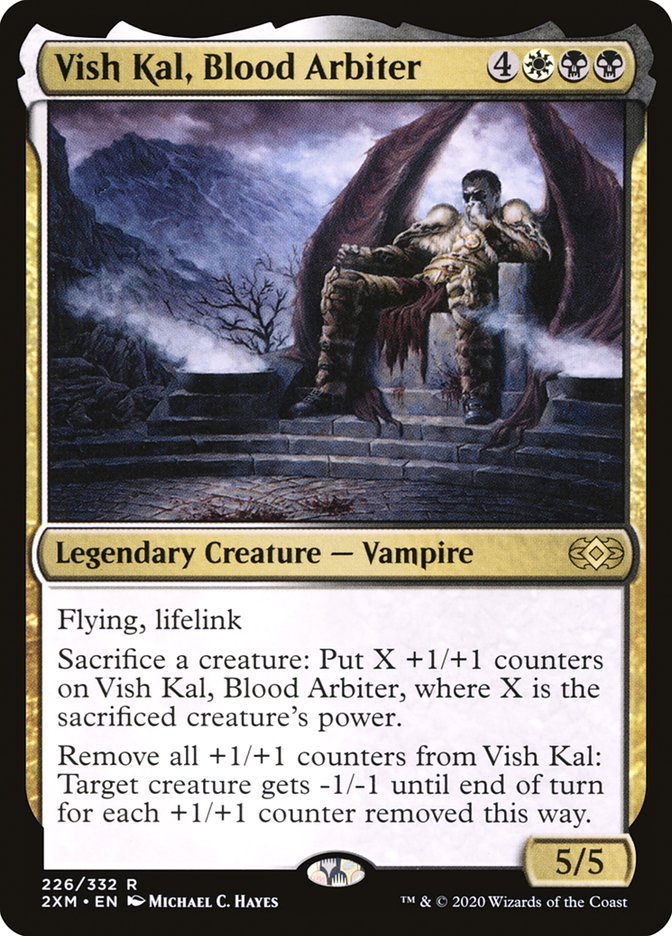
Creatures without protection that cost seven mana are a tough sell these days, but Vish Kal, Blood Arbiter still earns its keep at casual tables. It can use your creatures as removal, kind of like Phyrexian Plaguelord with extra steps.
Vish Kal can also threaten to one shot players who don’t respect how many +1/+1 counters it can get from the rest of your board.
#7. Baba Lysaga, Night Witch
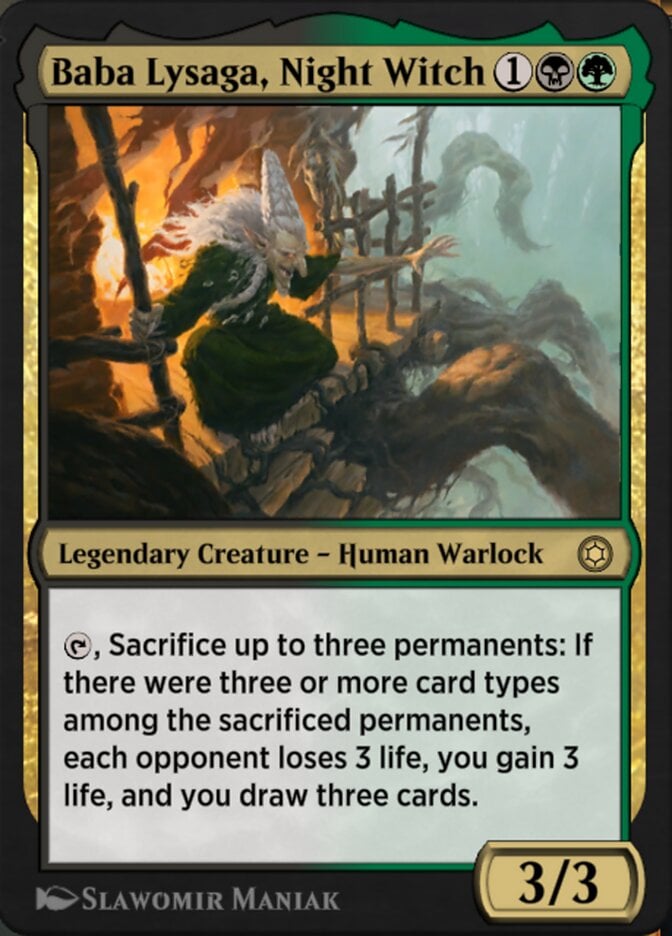
Baba Lysaga, Night Witch is a bit of a Rube Goldberg sac outlet. You have to combine different types of permanents to make it tick, but it rewards you with a recharged hand of cards and a decent life swing.
#6. Vraska, Golgari Queen
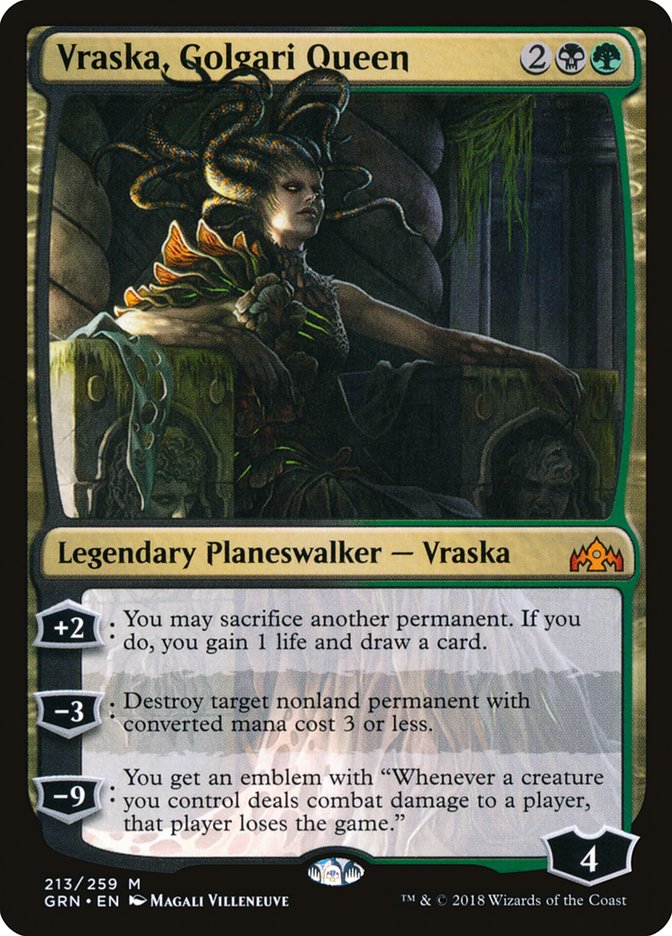
Vraska, Golgari Queen is a respectable planeswalker with a small-ball removal ability and a reusable card advantage mode. You can sacrifice anything to its +2, not just creatures, but you always replace it with a fresh card and a point of life.
It’s not the best at protecting itself, but it should be a reliable engine-piece until its brought down.
#5. Caesar, Legion's Emperor
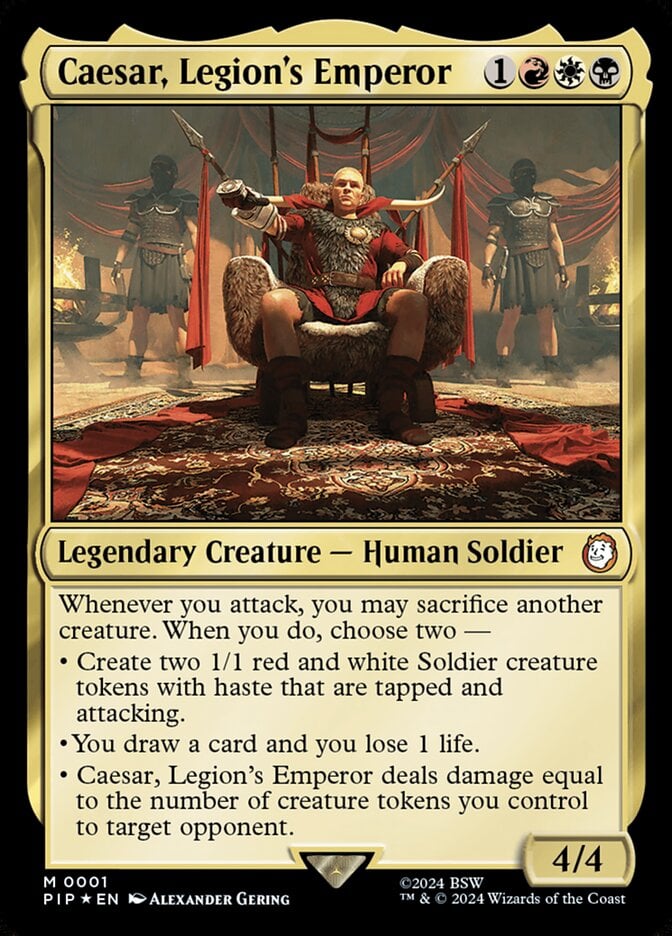
Caesar, Legion's Emperor is the Commander for one of the 4 Fallout Commander precons. It's got quite a bit of text, but in short, you can make a 1/1, draw a card, or do a bunch of damage to an opponent whenever you sacrifice another creature! It's an incredible outlet + payoff combo that's also in the best colors for sacrifice decks: Mardu ().
#4. Anhelo, the Painter

Anhelo, the Painter (and the casualty mechanic as a whole) definitely stretches what sacrifice decks can look like. Some blue supplements the typical Rakdos base to give you a hybrid spells/sac deck.
This is cool new territory that gives you an incentive to put blue in your sacrifice deck.
#3. Ziatora, the Incinerator
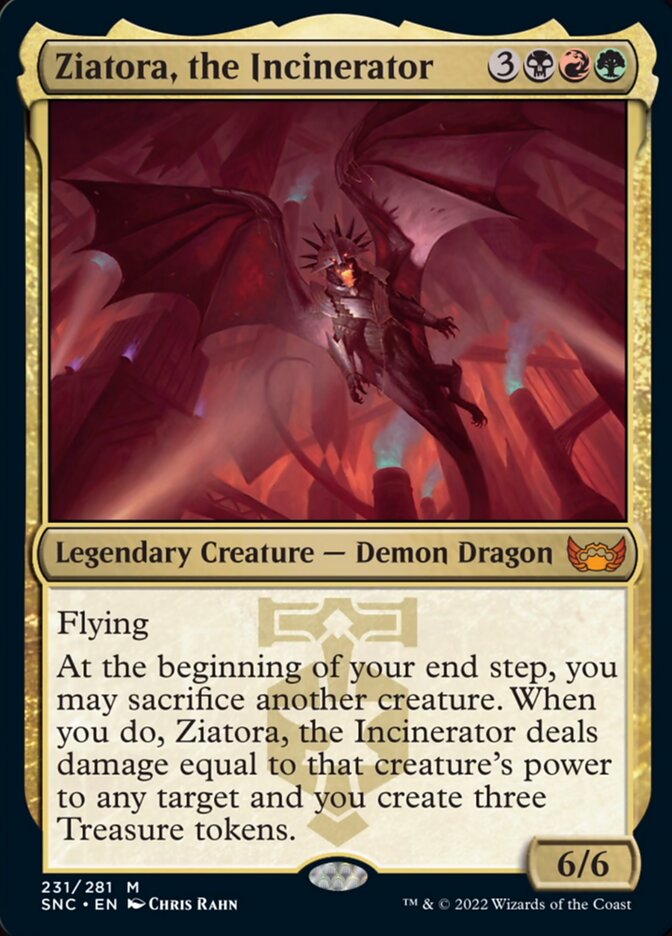
The Riveteers crime boss Ziatora, the Incinerator happens to be a big scary dragon that ramps and deals damage at the same time. You’ll want to toss away more powerful creatures for maximum effect, but even tiny sacrifices go a long way.
#2. Immersturm Predator

Immersturm Predator is the full package: a free sac outlet, an evasive and growing beater, and a graveyard hater all in one. Throw in two highly relevant creature types for tribal decks and you’ve got a well-rounded creature on your hands.
#1. Korvold, Fae-Cursed King
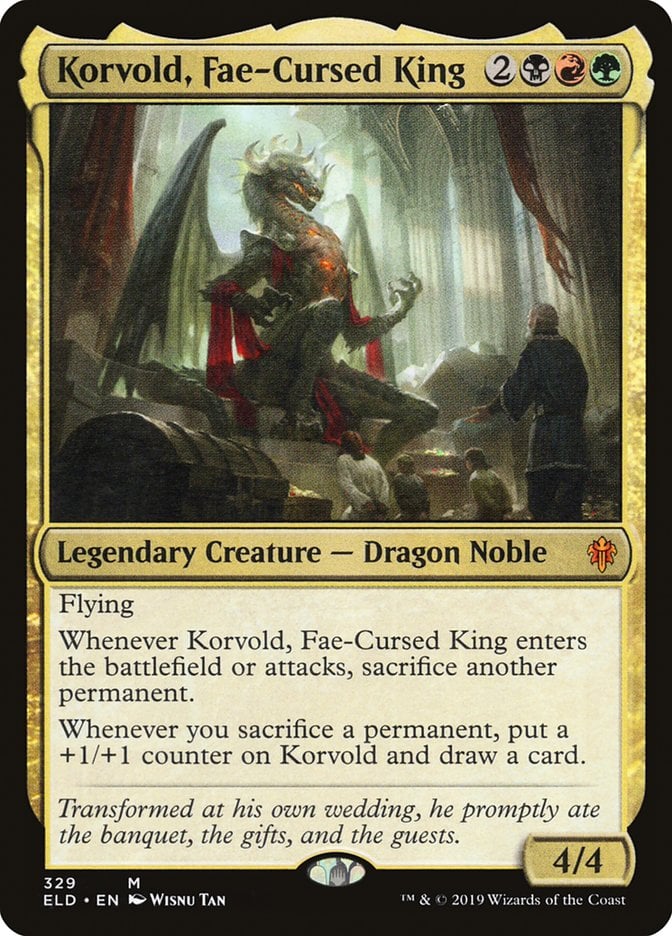
Ziatora, the Incinerator, Prossh, Skyraider of Kher, and Vaevictis Asmadi, the Dire all sit backseat to the true king of Jund () sacrifice dragons: Korvold, Fae-Cursed King. Korvold becomes enormous when you sacrifice pretty much anything, let alone creatures, and itdraws you extra cards.
Korvold's sac outlet triggers on ETB and when it attacks.
Best Colorless Sac Outlets
#9. Demonmail Hauberk + Grafted Wargear
Demonmail Hauberk and Grafted Wargear are equipment that compensate for their large stat boosts by asking you to sacrifice creatures to move the equipment around. They’re a bit finnicky, but decks that need free sacrifice outlets might consider them.
#8. Blasting Station

The sacrifice ability on Blasting Station isn’t the most powerful effect in a vacuum, but it has a role in some infinite damage combos. Take the infamous Reveillark plus Karmic Guide combo. The Station can convert the looping reanimation effects into infinite pings.
#7. Eldrazi Monument
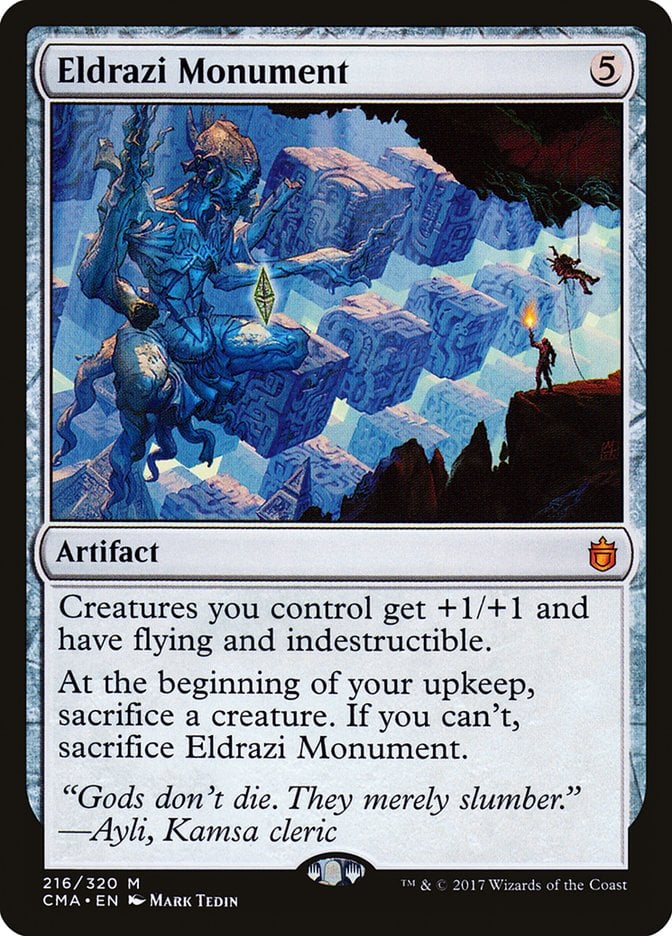
Sacrificing a creature to keep your Eldrazi Monument around is meant to be a drawback, but you’ll get a huge boost to your board if you can give it a positive spin. Think of this like the go-wide equivalent of Cultist of the Absolute.
#6. Trading Post
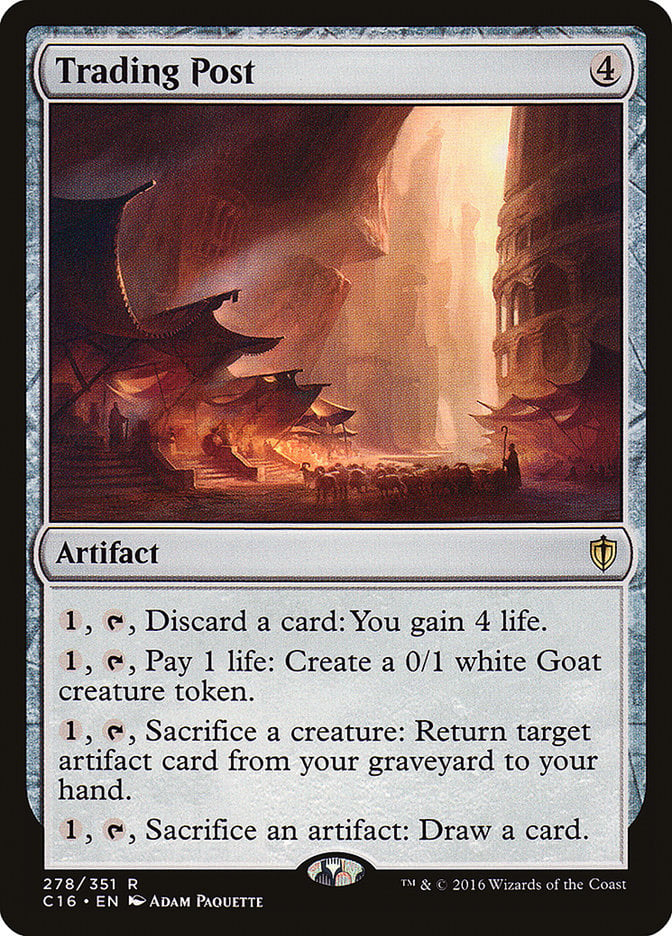
Trading Post is a jack-of-all-trades utility artifact that makes up for its lack of raw power with a slew of useful activated abilities. This is best suited for artifact-themed decks, but the ability to generate Goats and sacrifice creatures for value makes this a worthwhile consideration.
#5. Smokestack
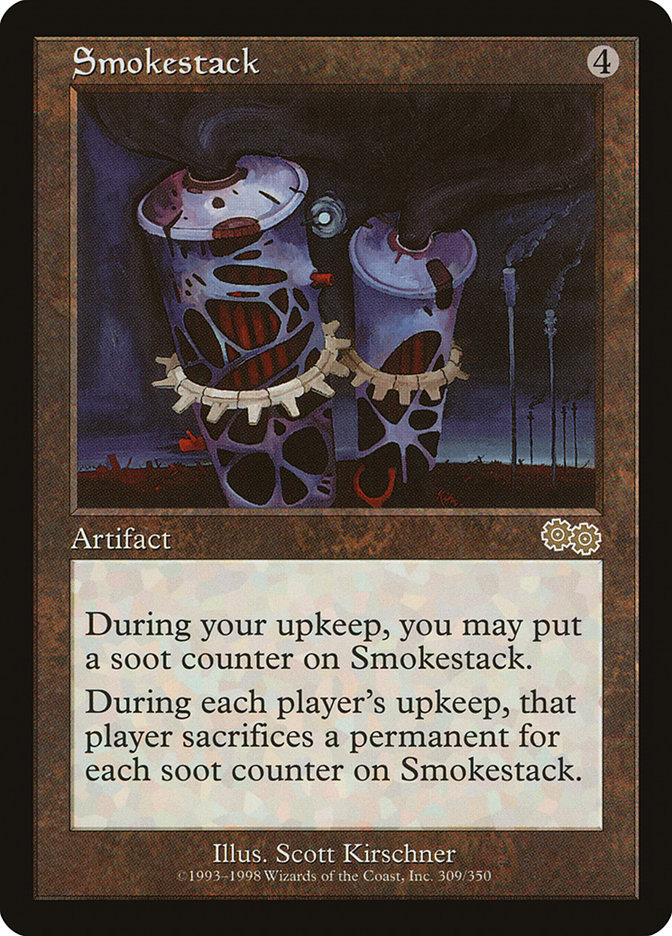
Smokestack introduces a risky game of cat-and-mouse with the rest of the players at the table. As the initiator you should be able use the forced sacrifice to your advantage and whittle down the opponents’ resources.
If you’re a first-time Smokestacker, remember to stack the triggers on your turn to sacrifice permanents before adding counters. But don’t worry, you can always sac the Smokestack to itself as an exit strategy.
#4. High Market
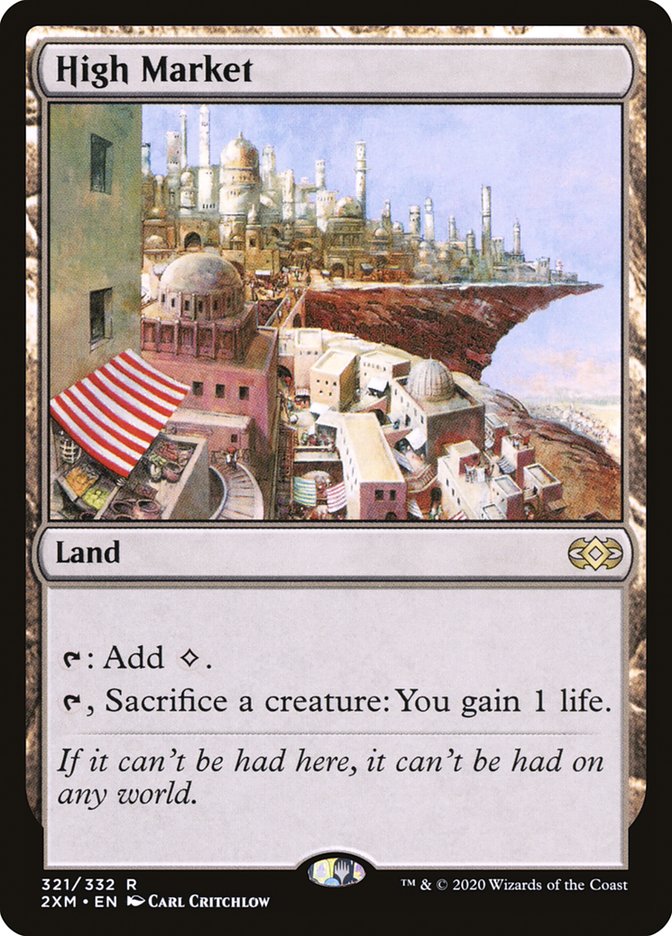
Don’t be fooled by the lifegain on High Market. The real power comes from being able to hold up your land for mana or to use it as an instant-speed sac outlet. It’s like a Phyrexian Tower for budget decks, for decks that can’t play black, or for decks that want a weaker second copy of Tower.
#3. Altar of Dementia

The first of the “broken Altar trifecta,” Altar of Dementia rewards your sacrifices by milling you or an opponent. Commanders like Sidisi, Brood Tyrant or Zellix, Sanity Flayer can create loops by sacrificing the tokens that they create to keep milling.
Other decks prefer it as their sac outlet of choice for their combos. The Karmic Guide plus Reveillark combo rears its ugly head again.
#2. Phyrexian Altar

Phyrexian Altar turns creatures into mana and sits at the forefront of countless infinite combos. The ability to sac creatures for extra mana can net you enough mana to cast any number of game-winning spells.
#1. Ashnod’s Altar

The best sacrifice engine in all of Magic is undoubtedly Ashnod's Altar. It’s like Phyrexian Altar but it generates two colorless mana instead of one mana of any color.
The math speaks for itself, and a list of combos involving Ashnod's would require an entirely different article. You’re very likely to either win or die soon if you cast this.
Best Sacrifice Payoffs
Unless you’re sacrificing creatures to satiate your inner bloodlust (trust me, I’ve been there), you probably need a real reason to be doing so. Looking at individual cards shows you how to sacrifice creatures but looking at different payoffs and strategies can show you why.
Aristocrat Payoffs
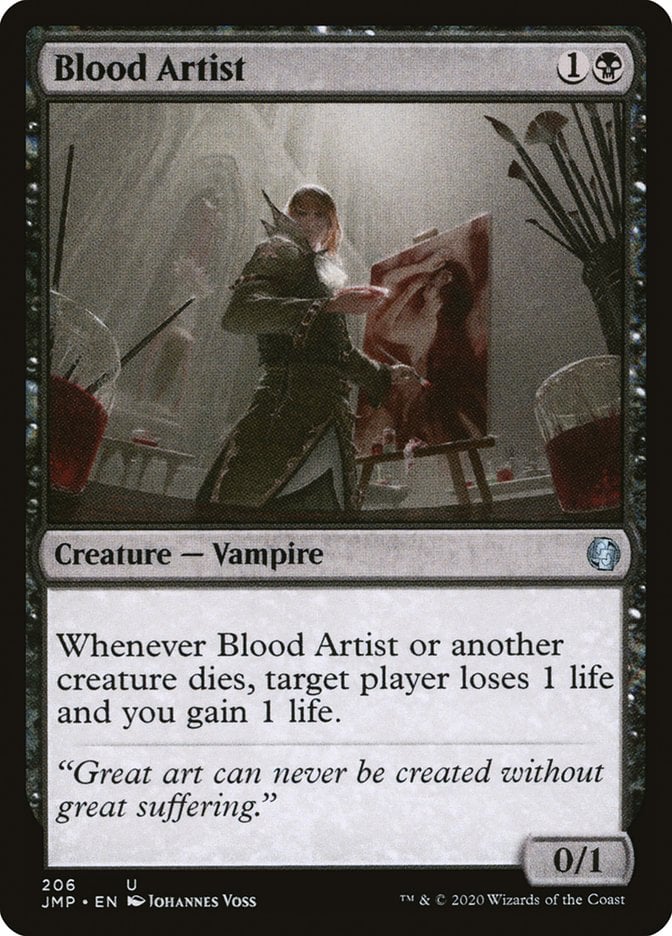
The most obvious way to bring out the power of your sacrifice outlets is to stock up on creatures that trigger when other creatures die. Blood Artist is the posterchild for these sorts of effects, but there are plenty of others to choose from. They complete the formula of “sac outlet + sac fodder = reward.”
Stockpiling a few effects like this on board can lead to victory by draining your opponents’ life totals.
Other payoffs might include extra card draw or board control, like with Midnight Reaper and Grave Pact respectively.
Graveyard Payoffs
Sacrificing creatures usually goes hand-in-hand with filling up your graveyard, especially since the best sacrifice fodder comes from perky recursive bodies like Reassembling Skeleton or Gravecrawler. Sac outlets can be a great means to stock up if you’re playing a deck that cares about having a lot of creatures in your graveyard.
Token Decks
Tokens also play well with sacrifice decks, but it’s a bit of the reverse situation. Here generating tokens is usually the primary game plan while your powerful sac outlets are there to feed off all those bodies.
When Can You Sacrifice a Creature?
You can only sacrifice a creature if instructed to do so by something in the game, whether that be your or an opponent’s spell or ability. You can’t just sacrifice a creature on a whim.
Can You Sacrifice a Creature You Don’t Control?
You can only choose from creatures you control on the battlefield when instructed to sacrifice a creature. You have to already control the permanent you want to sacrifice to pay for a spell or ability that requires you to sacrifice something.
Can You Sacrifice a Creature Before It’s Destroyed?
If something on the stack is about to destroy your creature, you can sacrifice your creatures “in response” as long you have something in the game to instruct you to do so (a sac outlet). It’s too late to sacrifice your creatures once a destroy ability resolves or lethal damage is dealt to them.
Is Sacrificing the Same as Dying?
Think about it this way: a creature dies when it's sacrificed, but not every creature that dies was sacrificed.
Sacrificing is slightly different than a creature dying. Sacrificing is a game action that means moving a creature from the battlefield to its owner’s graveyard. “Dying” isn’t an action, but rather a shorthand way of saying a creature or planeswalker has moved from the battlefield to a graveyard, regardless of how it was sent there.
Can You Sacrifice a Creature with Summoning Sickness?
Summoning sickness has no effect on whether or not you can sacrifice something. You can play a creature and sacrifice it that same turn.
Can You Sacrifice a Tapped Creature?
Unless otherwise stated by the sacrifice effect you’re using, you can sacrifice a creature whether it’s tapped or untapped.
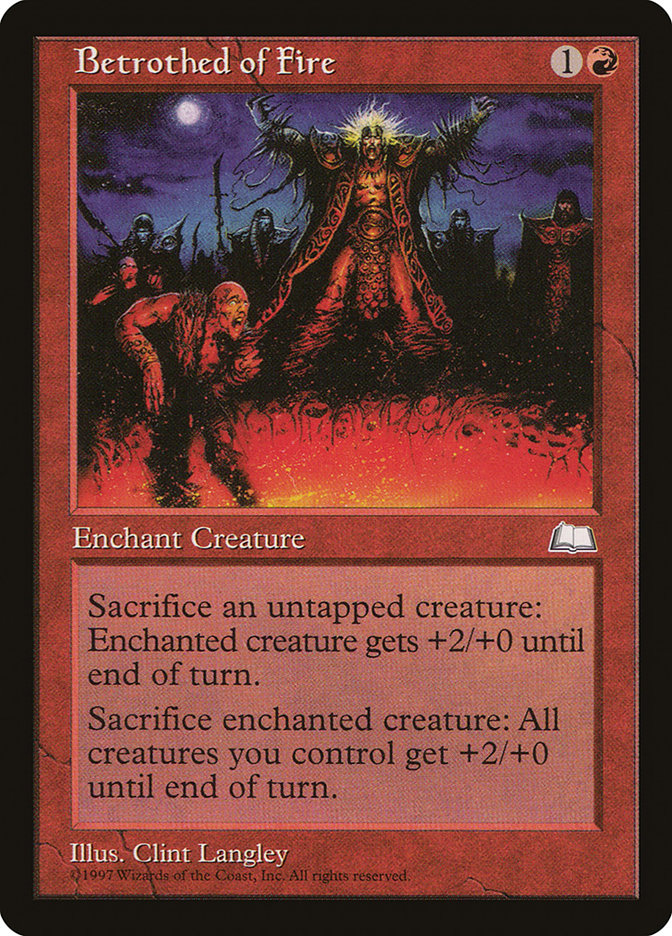
It’s extremely rare for sacrifice cards to be restricted to either tapped or untapped permanents (see Betrothed of Fire).
Can You Regenerate a Creature You Sacrifice?
Short answer: it’s generally a waste of resources to regenerate something that is about to be sacrificed.
You can activate regeneration abilities in response to a sacrifice effect on the stack, but it’s unlikely to make a difference. Regeneration specifically saves a creature from being destroyed or from dying of lethal damage, both of which are different from sacrificing.
Does Sacrificing a Creature Go on the Stack?
Once you’ve chosen a creature to be sacrificed you put that creature directly into its owner’s graveyard. It never moves to the stack to be interacted with.

Keep in mind that sacrificing a creature might cause other abilities to trigger, like your Blood Artist and friends, but the actual sacrificed creature doesn’t go on the stack at any point.
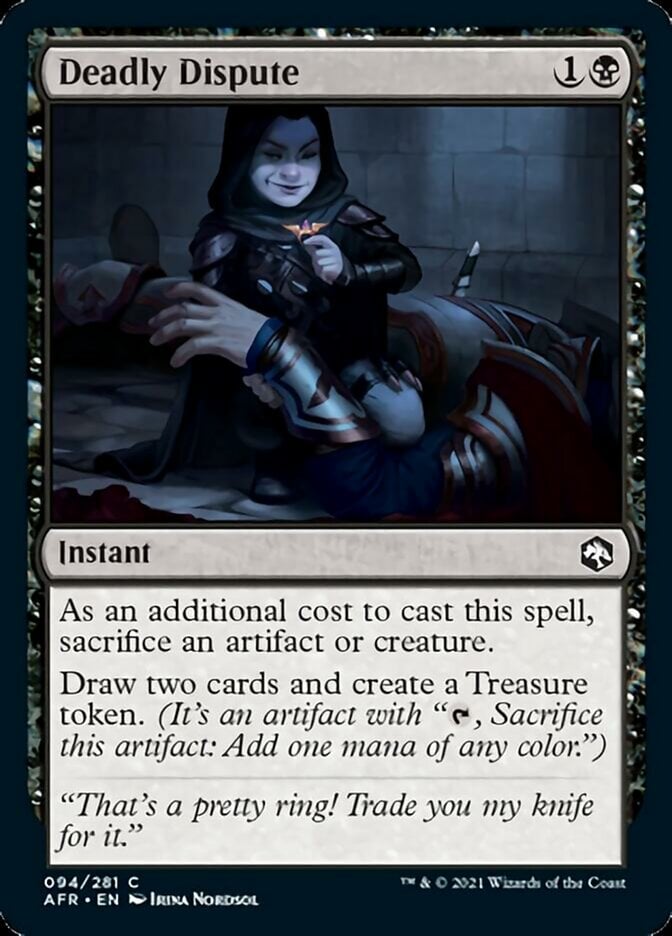
Sometimes a card like Deadly Dispute instructs you to sacrifice a creature as an additional cost. The spell itself goes onto the stack, but you put the sacrificed creature into the graveyard as part of the casting process for that spell. The sacrificed creature will already be in the graveyard by the time the spell is fully cast.
Does Totem Armor Protect from Sacrifice?
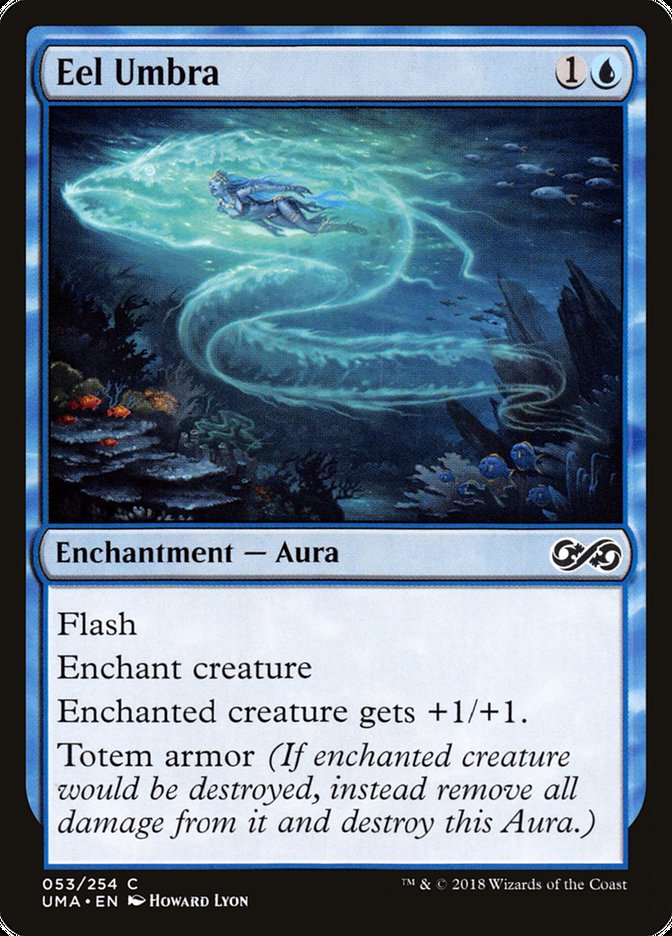
Bad news for everyone out there holding up their Eel Umbras for protection, because totem armor doesn’t stop sacrifice effects. Similar to regeneration, totem armor specifically replaces lethal damage or effects that say “destroy,” neither of which apply to sacrificing.
Can You Sacrifice a Creature for Multiple Effects?
Creatures can only be sacrificed to a single effect at a time.
For example, if your opponent targets you with Diabolic Edict, you can’t sacrifice your own creature to your Ruthless Knave’s ability and then sacrifice that same creature to the opponent’s Edict.
Can You Sacrifice a Creature with Hexproof?
Hexproof only stops your opponent from targeting your creature with spells or abilities, so it’s fair game to sacrifice your own hexproof creatures. Even shroud doesn’t stop you because the act of sacrificing something doesn’t inherently target anything.
Does Protection Protect Against Sacrifice?
Much like hexproof or indestructible, protection abilities won’t save your creature from being sacrificed.
Let’s again assume that your opponent is targeting you with Diabolic Edict, and now your only creature is a lone Auriok Champion. Since the Edict doesn’t target the Champion itself you still have to sacrifice it despite having protection from black.
Can You Sacrifice Tokens in Magic?
You can absolutely sacrifice tokens. In fact, they’re some of the best things you can sacrifice. Aristocrat decks often look for engines to generate creature tokens to fuel their abilities.
Can You Sacrifice a Creature from Your Hand?
The definition of sacrifice specifically states that a player can’t sacrifice something that isn’t a permanent. Since the cards in your hand aren’t considered permanents, you can’t sacrifice them.
Your Sacrifices Won’t Be in Vain

Garruk Relentless | Illustration by Grzegorz Rutkowski
Now that you’re an expert on everything sacrificial in Magic go out there and combine these cards together to see what works for you. It’s a deep strategy that constantly that gains new tools every set.
I hope this list helps you find something new for your next Commander deck. If I missed your favorite sacrifice outlet, I’d love to hear from you Let me know in the comments below or on Draftsim’s Twitter.
Thank you for making Draftsim your #1 stop for all things Magic. Stay safe and take care!
Follow Draftsim for awesome articles and set updates:



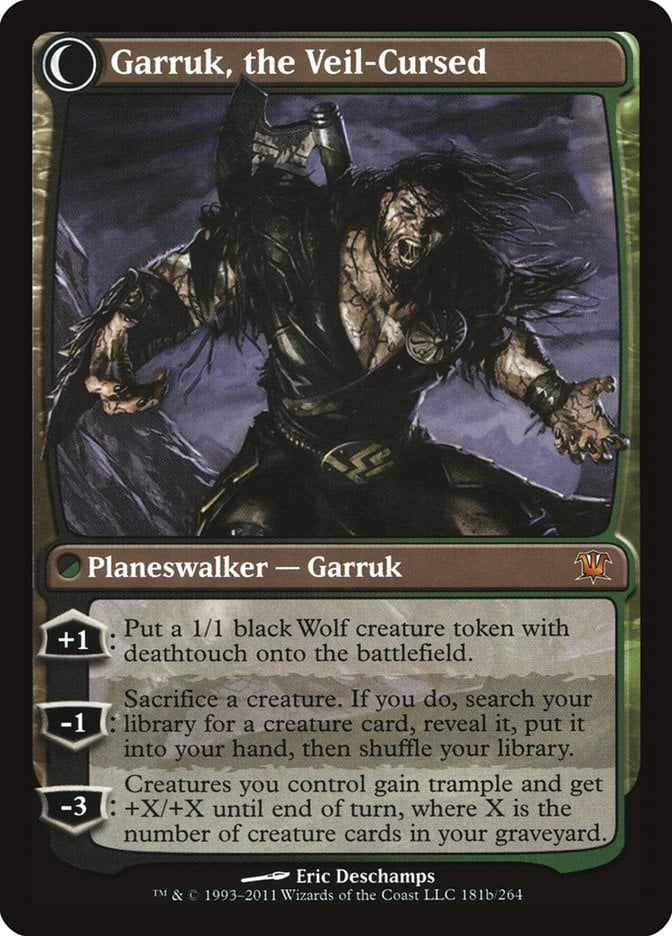
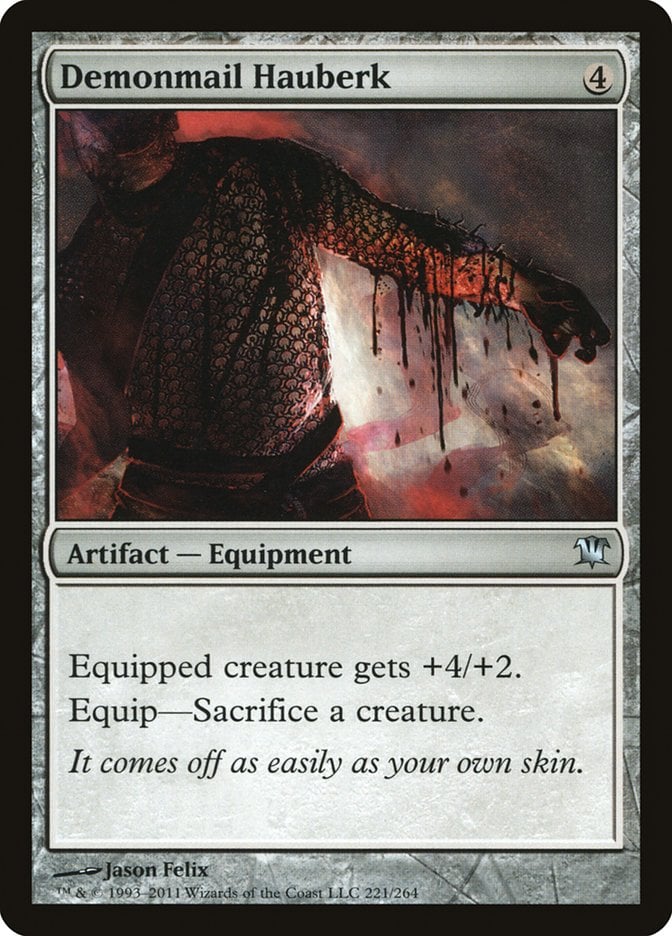
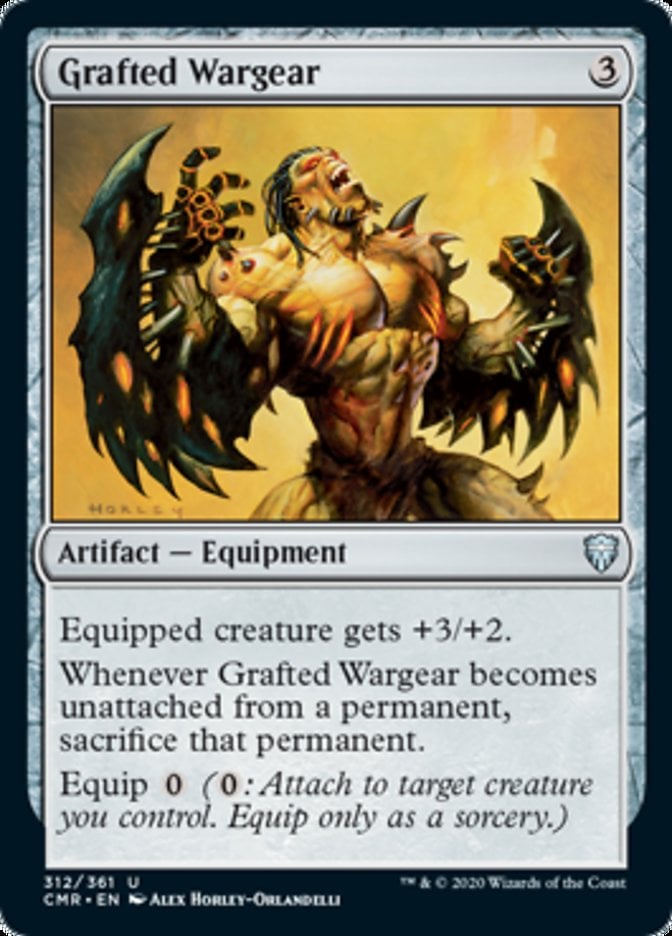
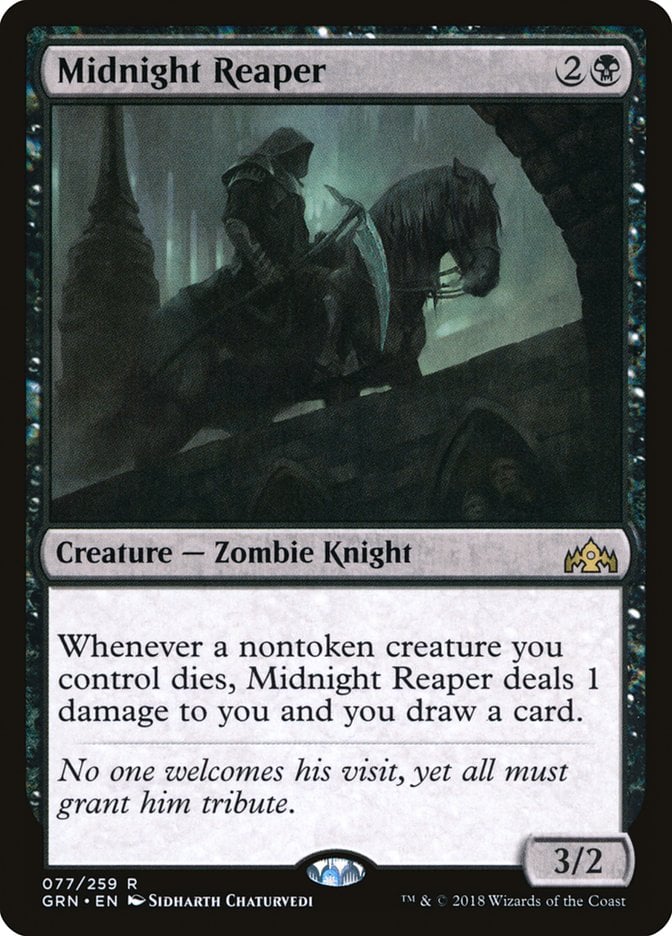
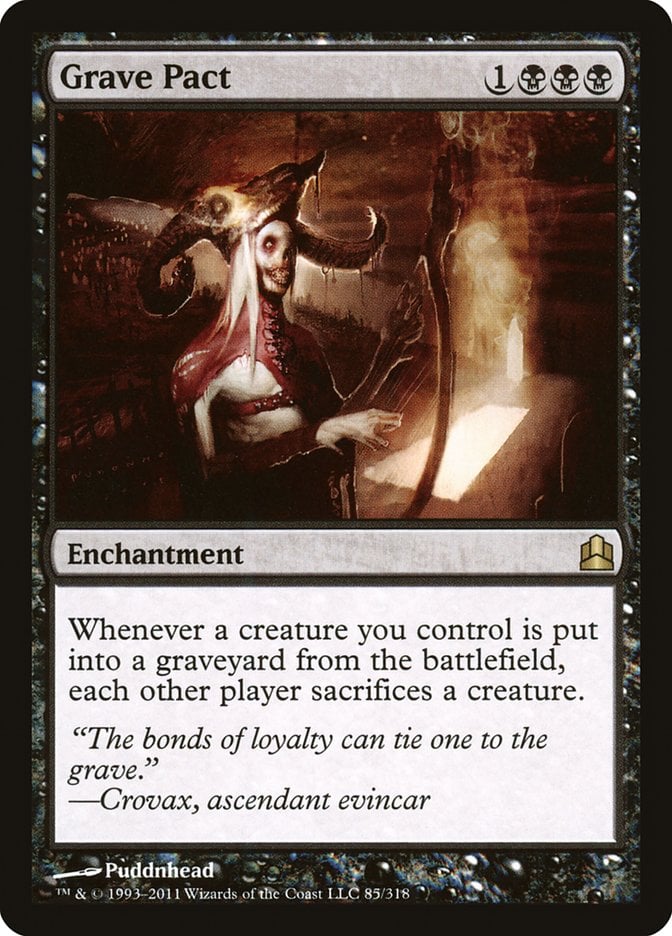
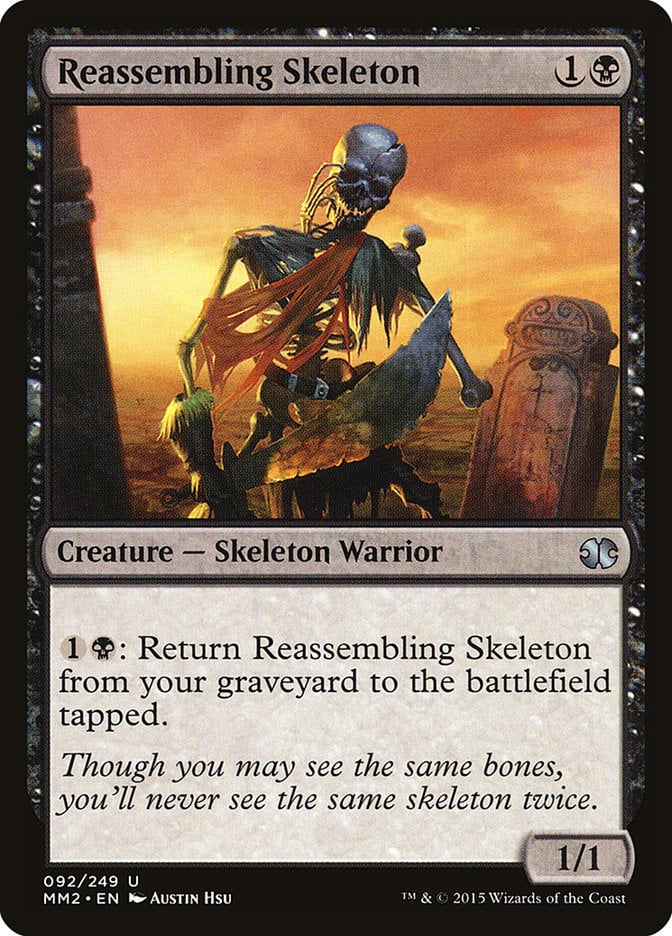

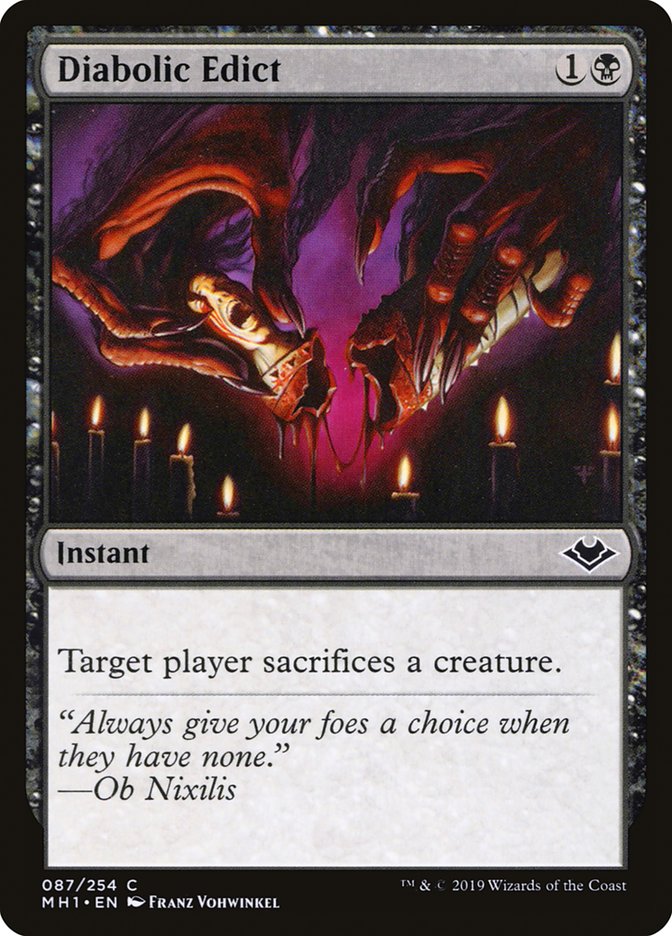
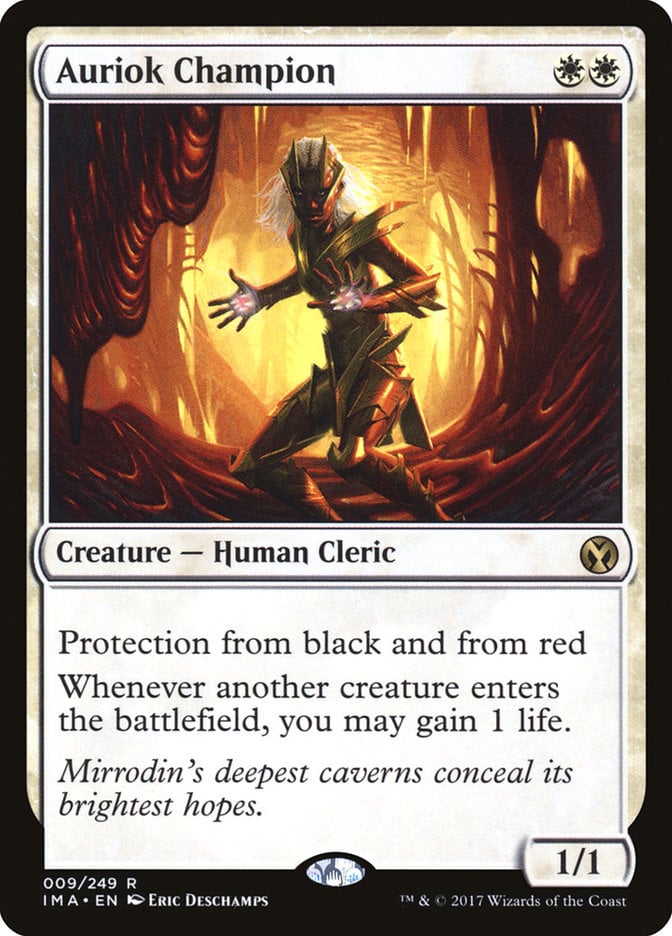

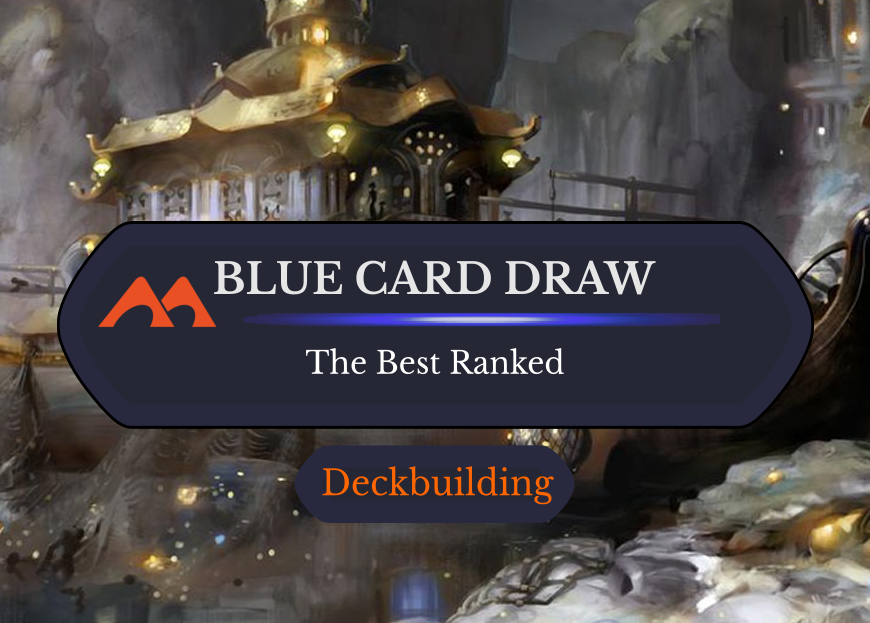
Add Comment